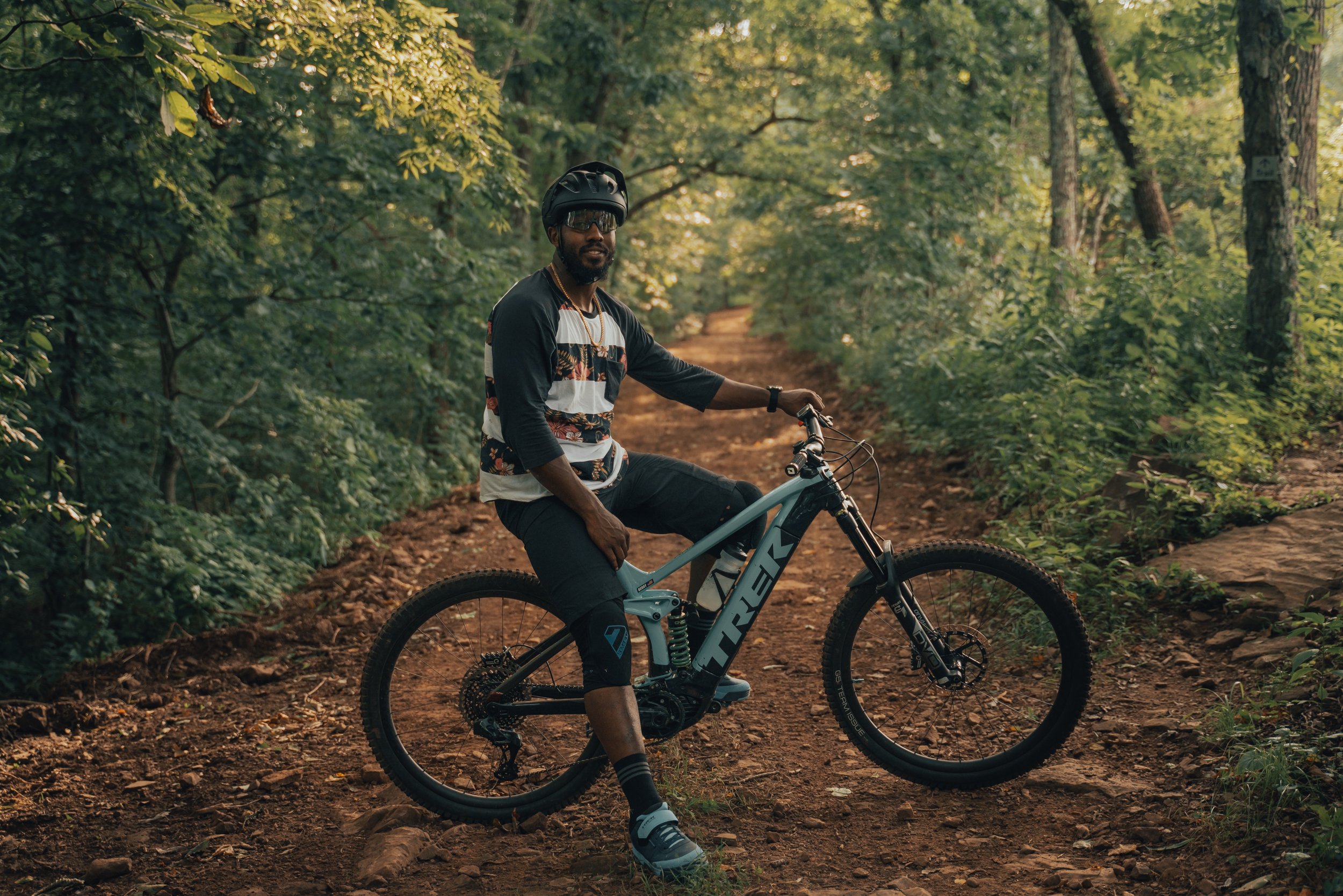

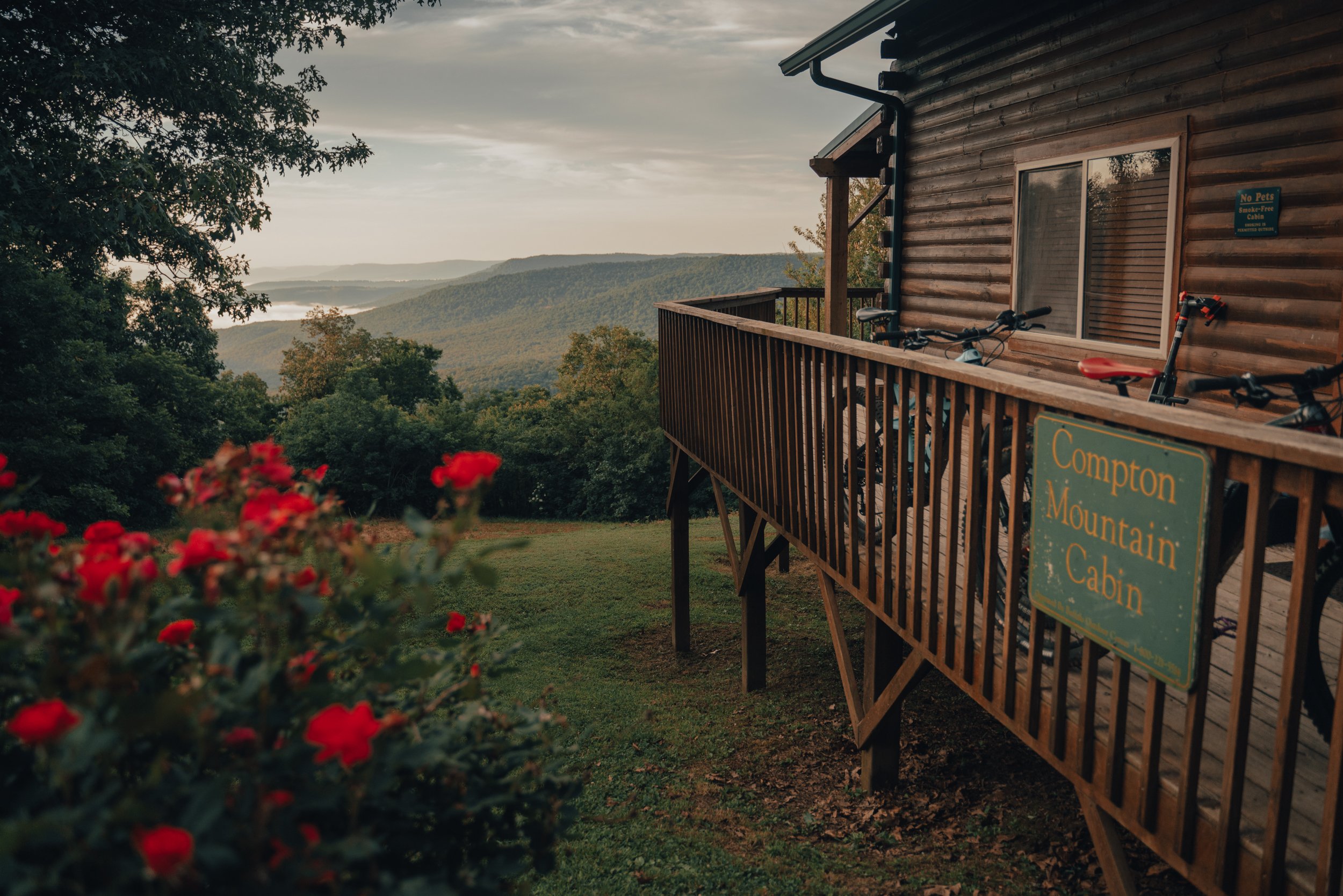
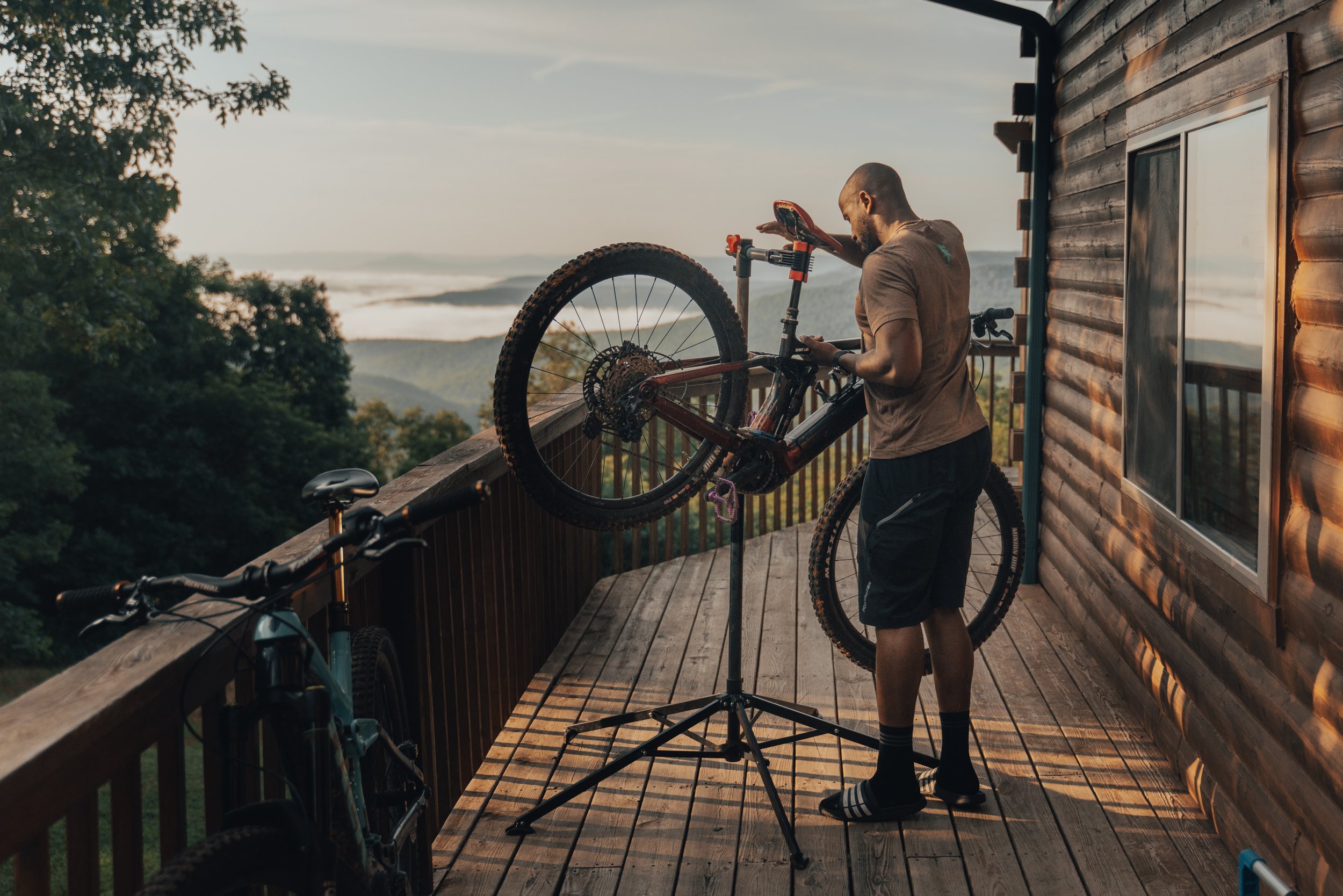


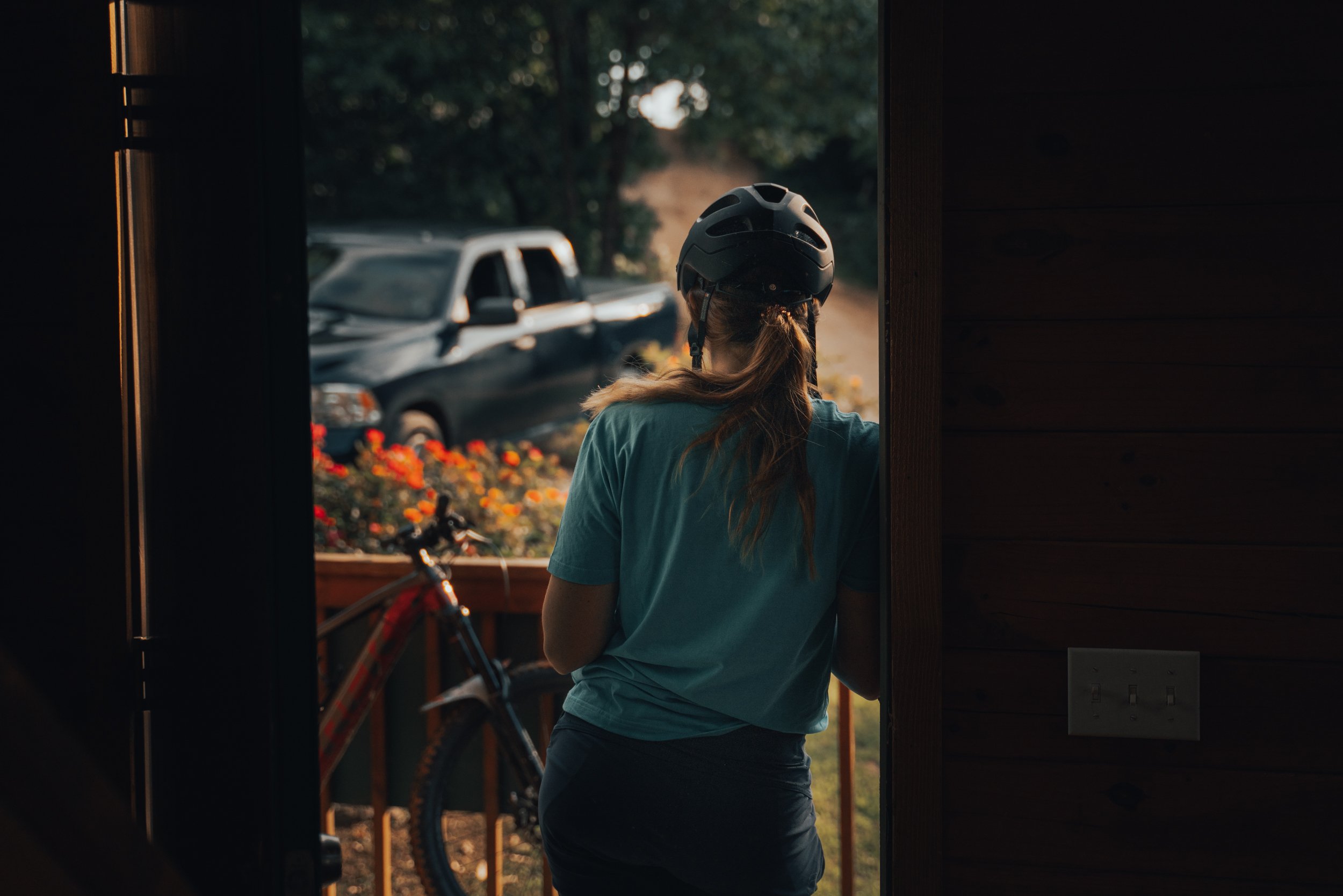

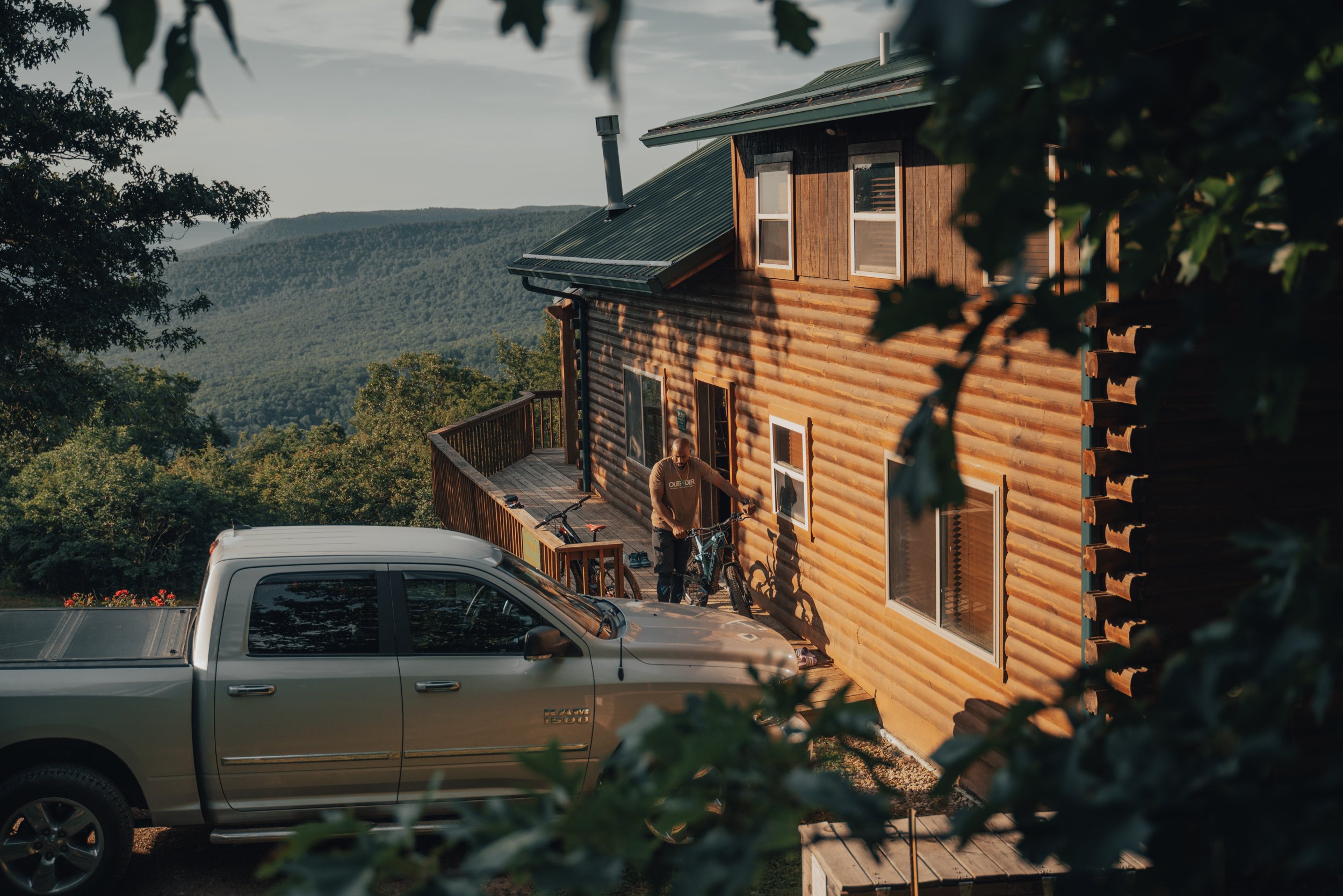
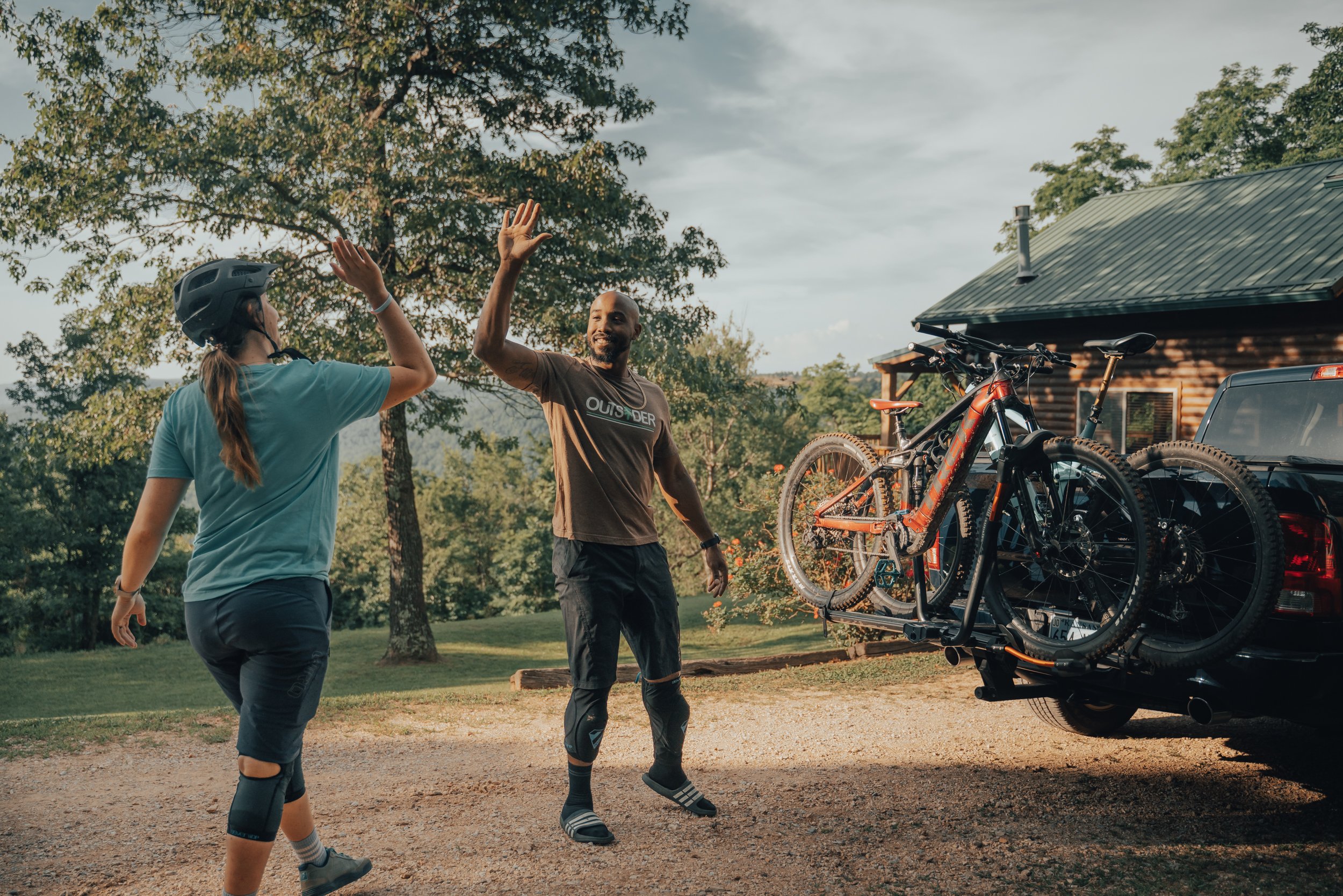
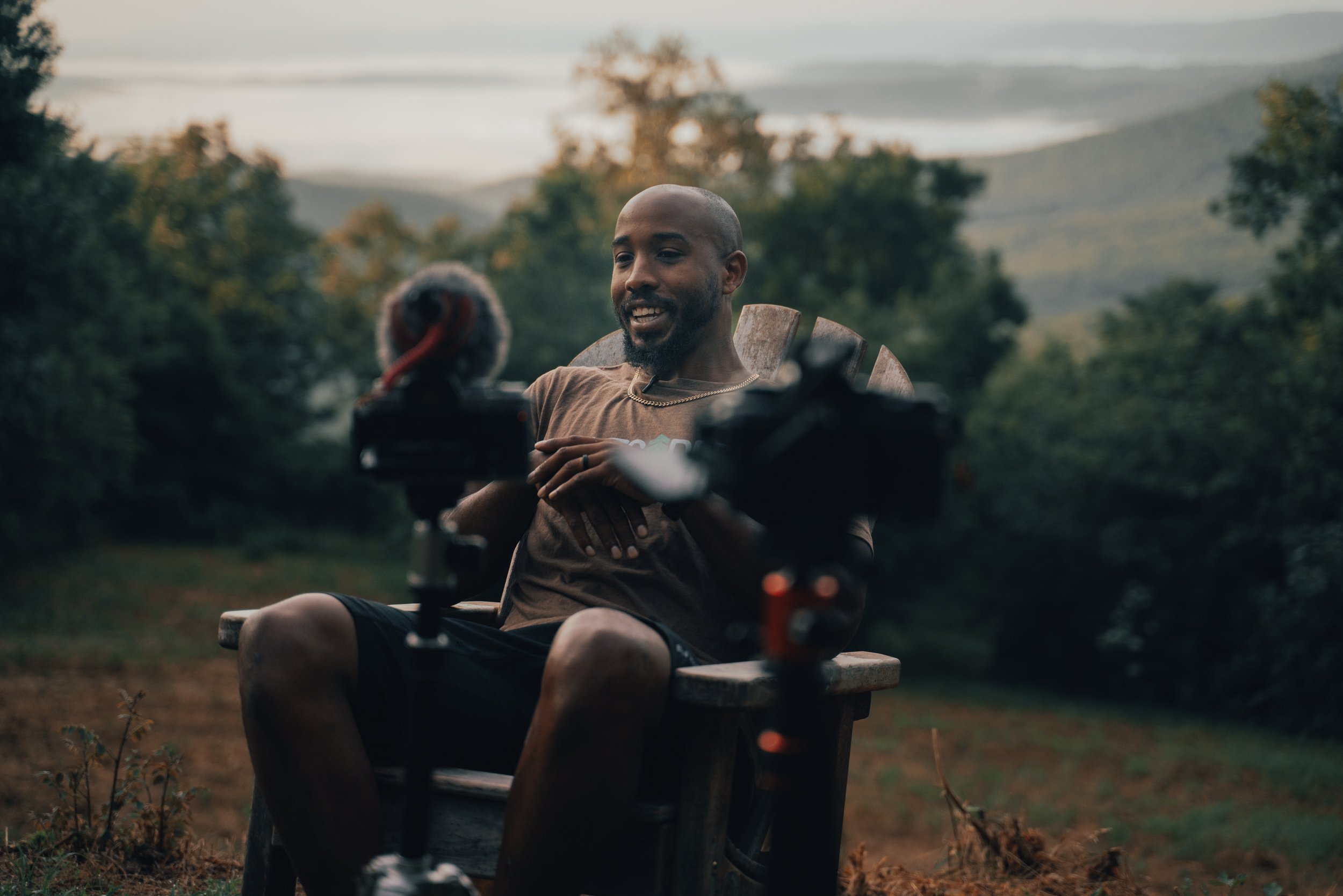


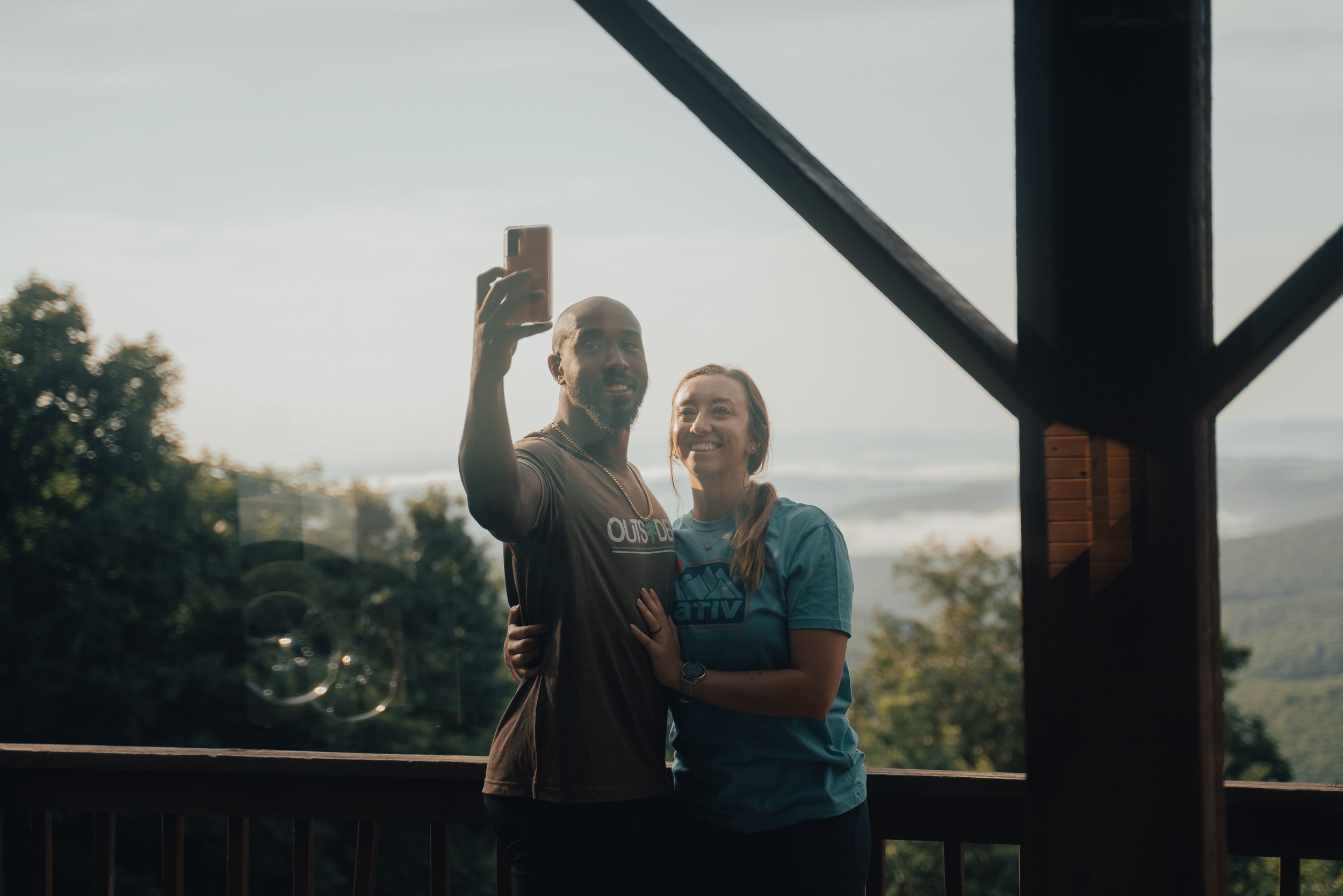


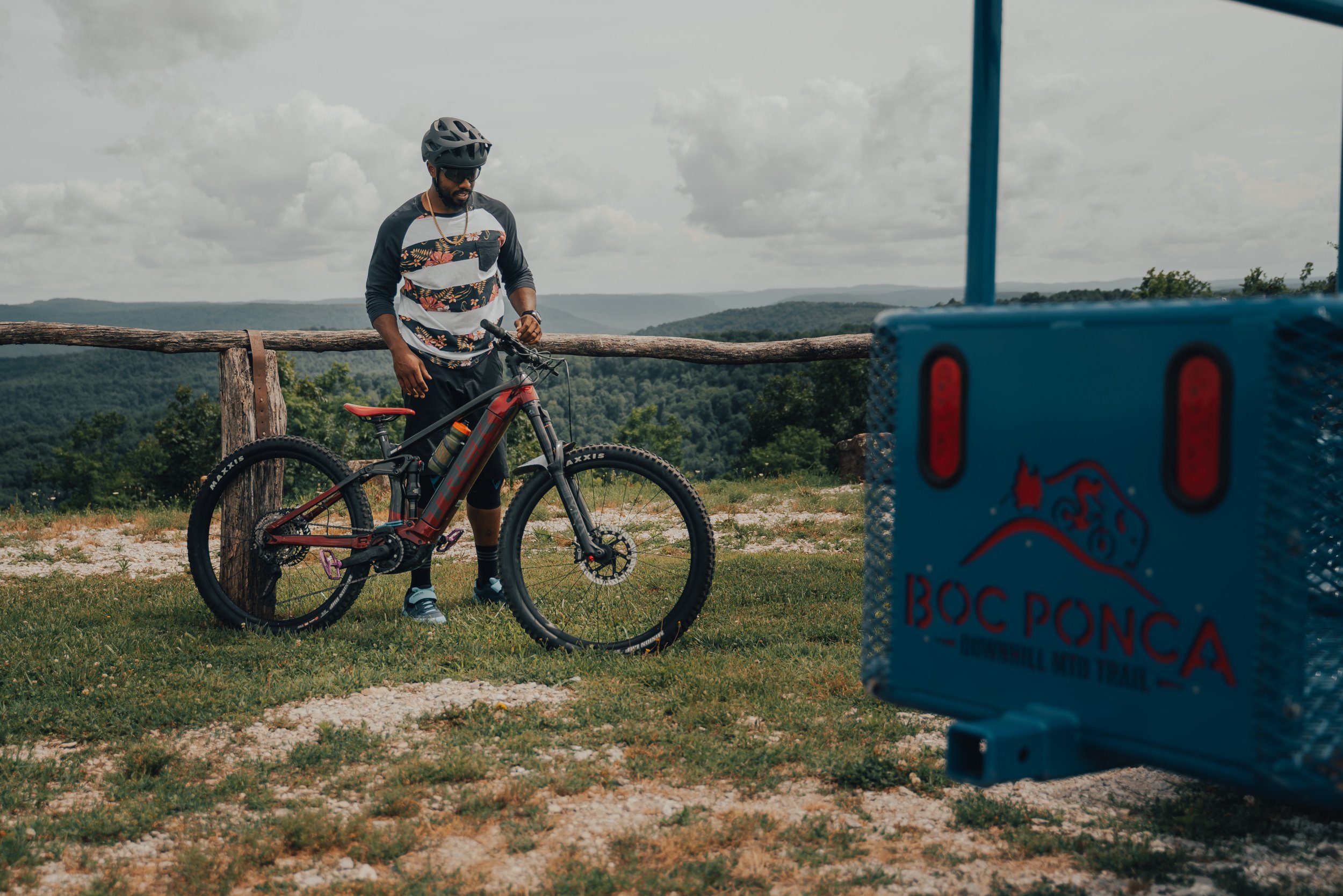
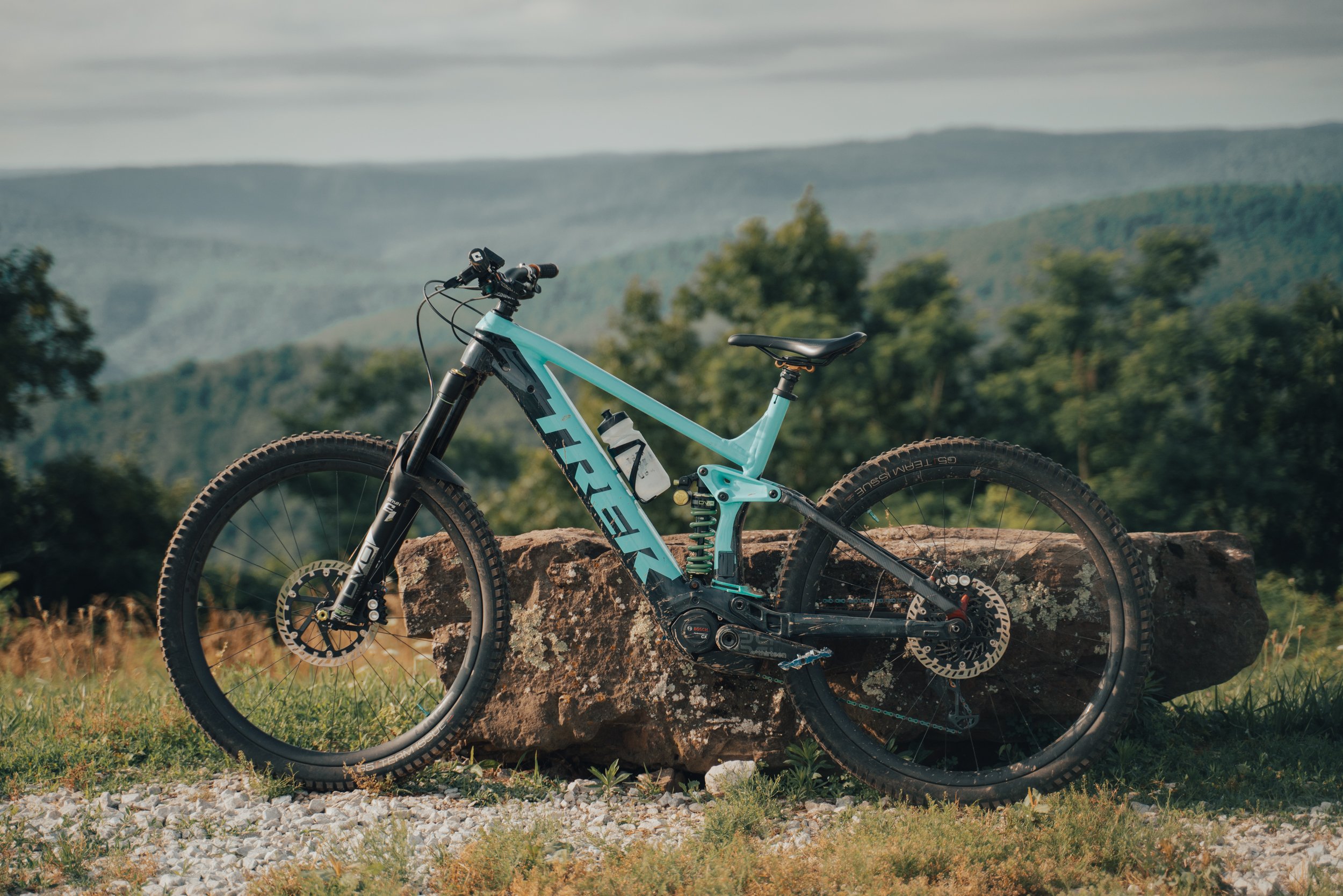
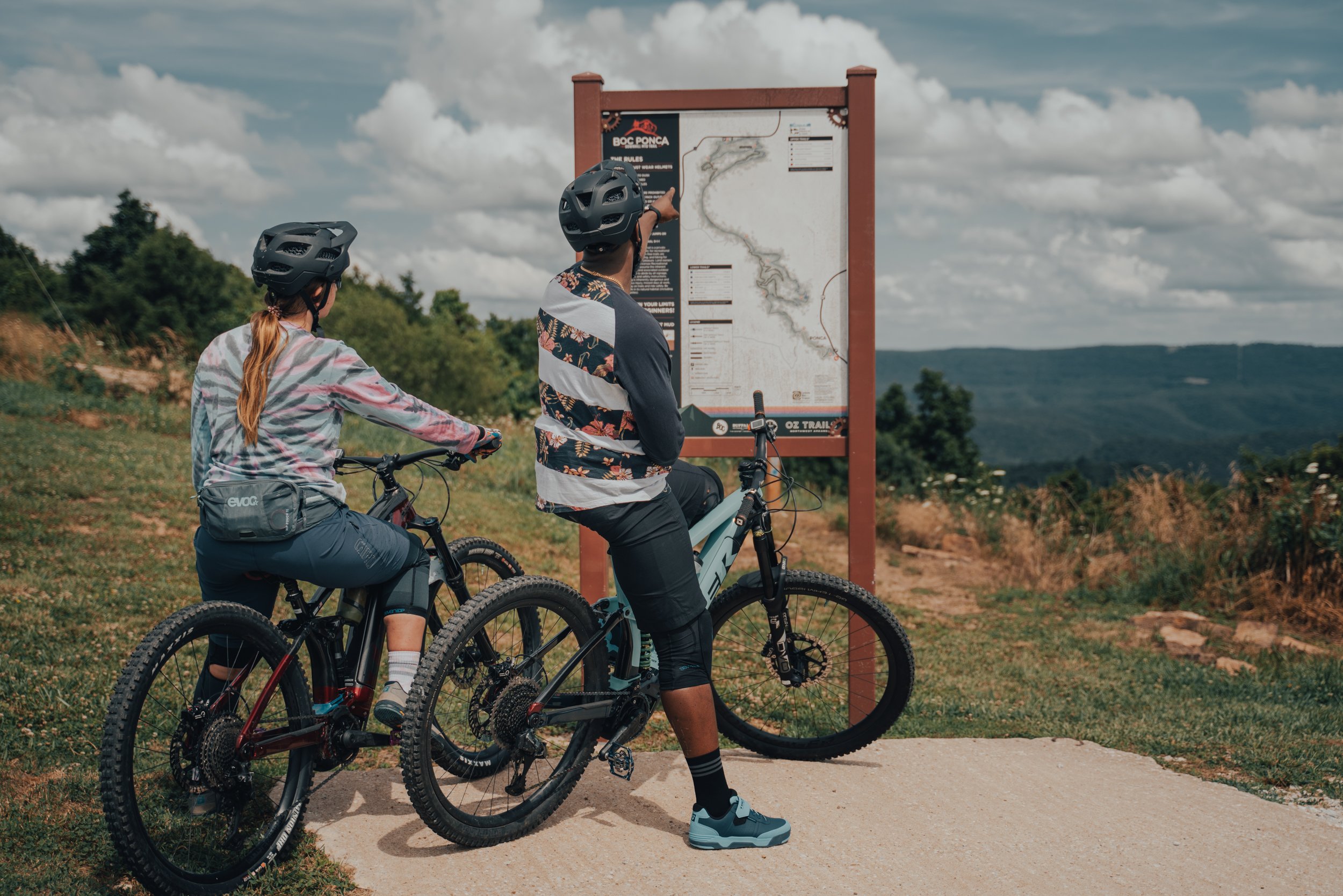
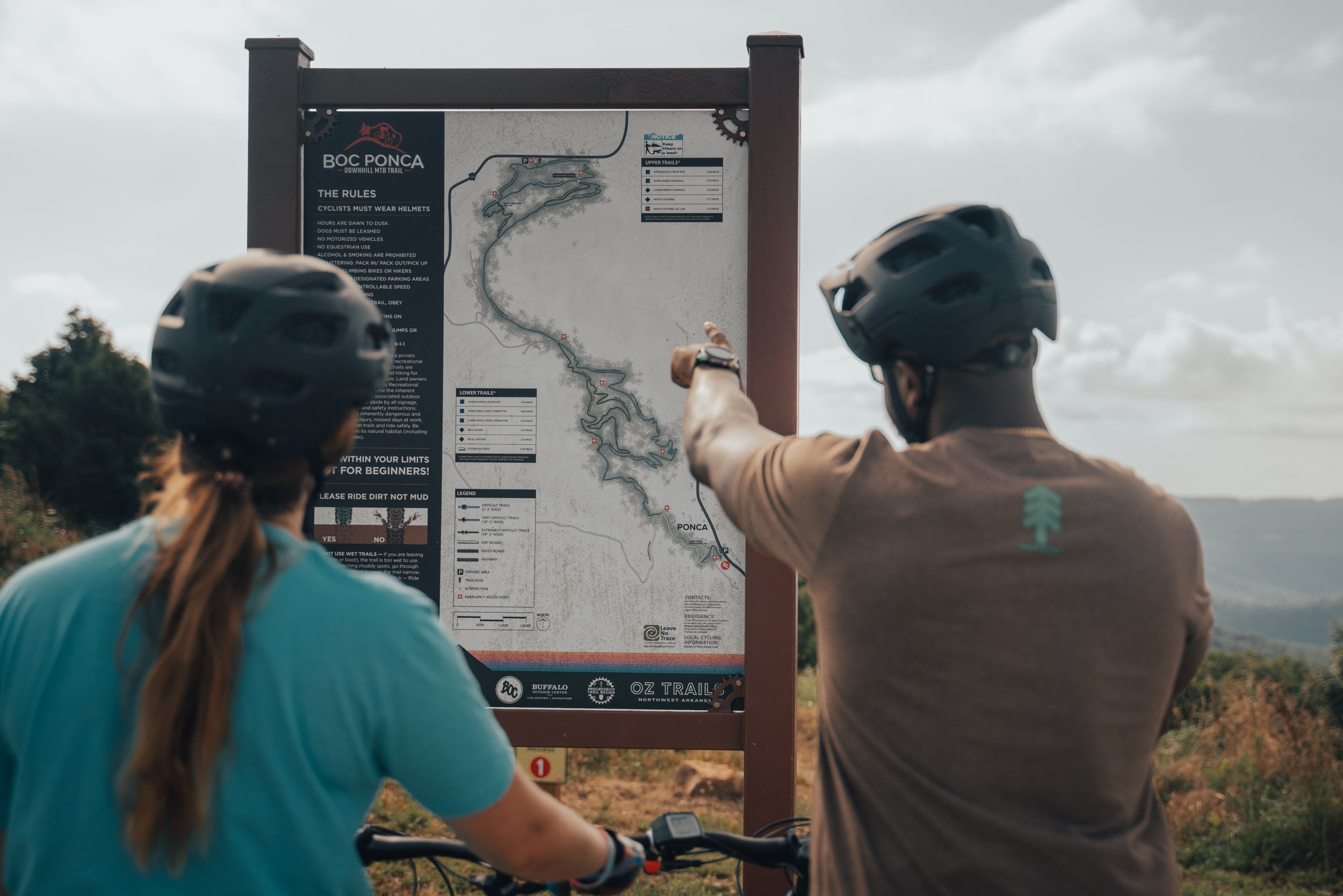
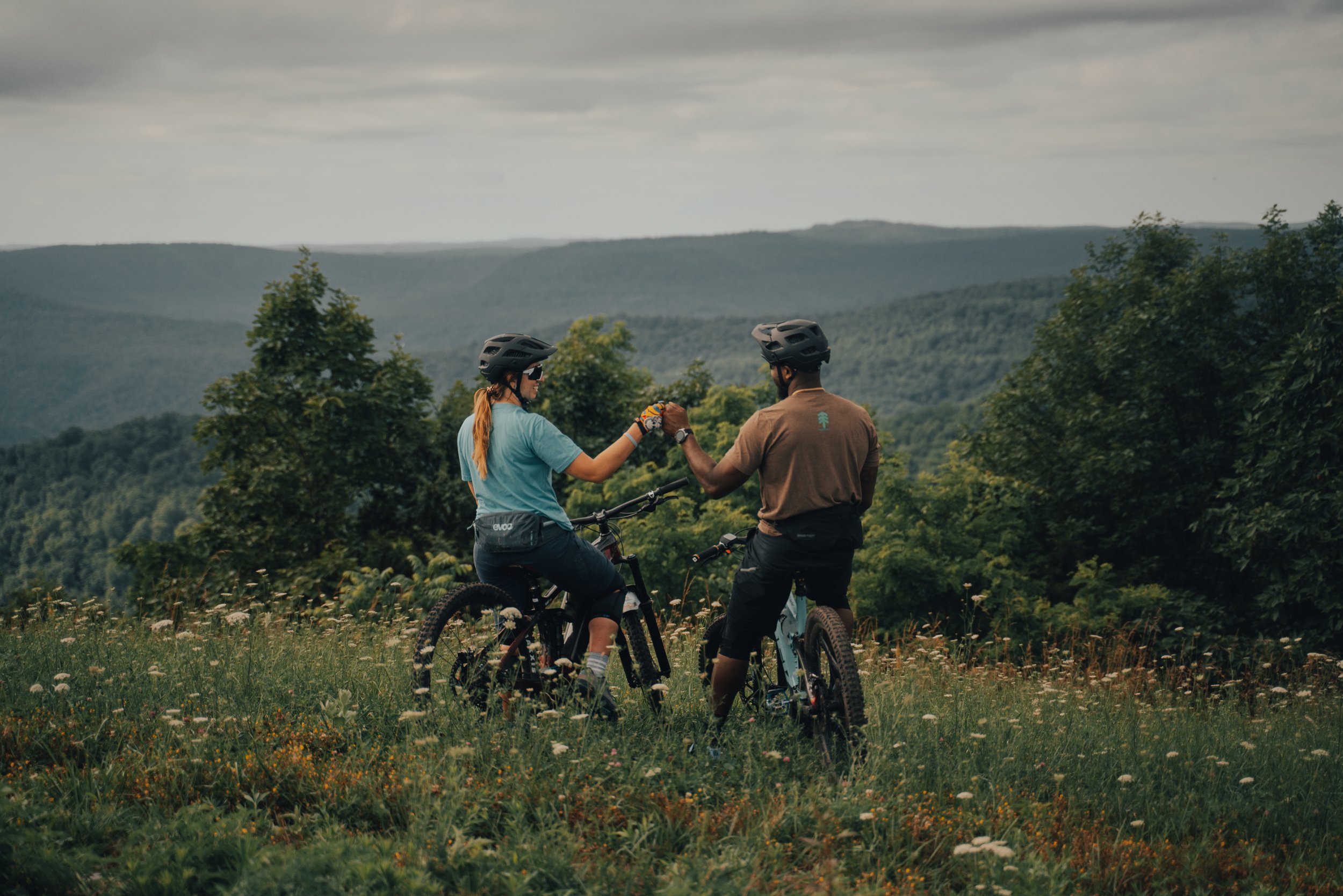
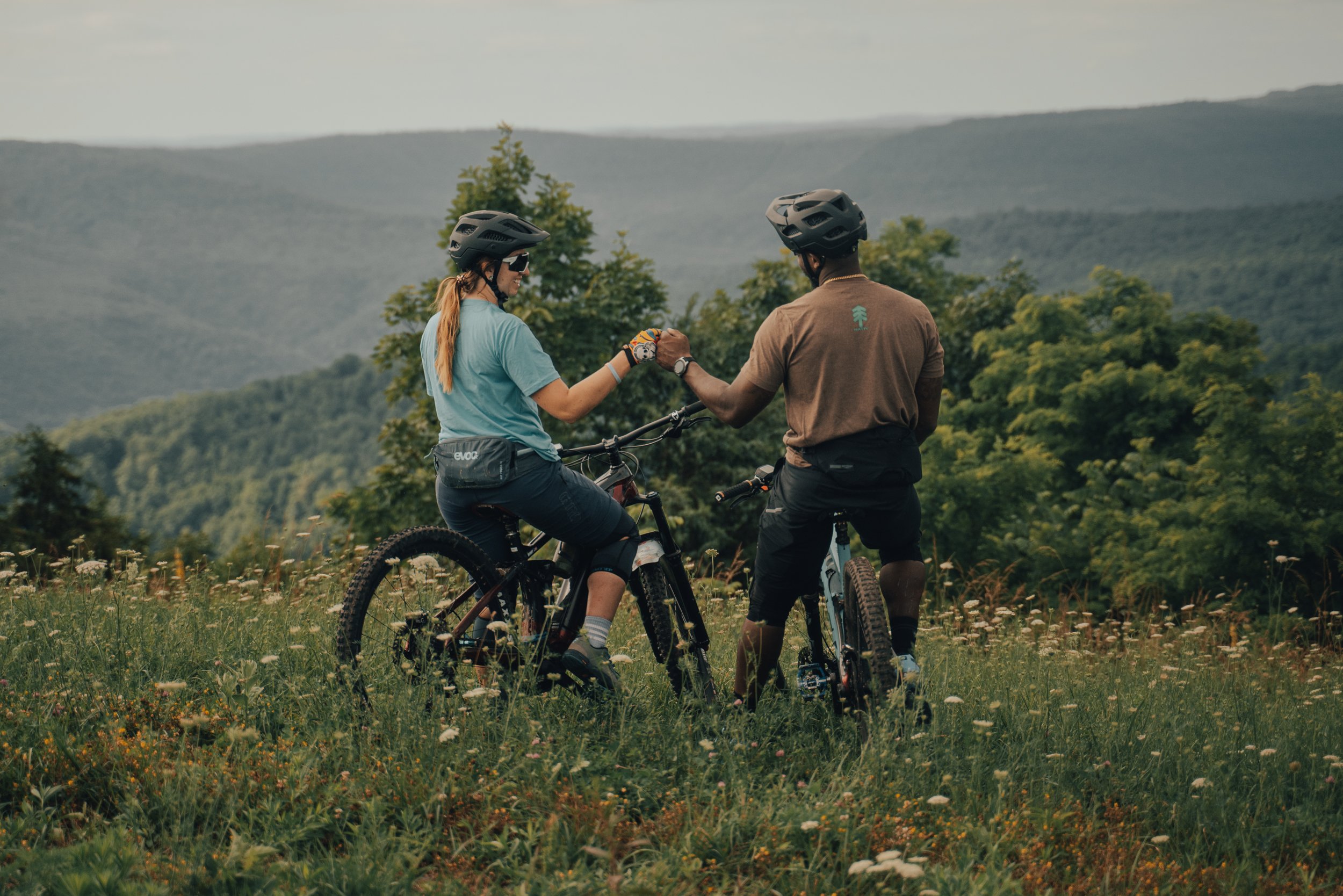
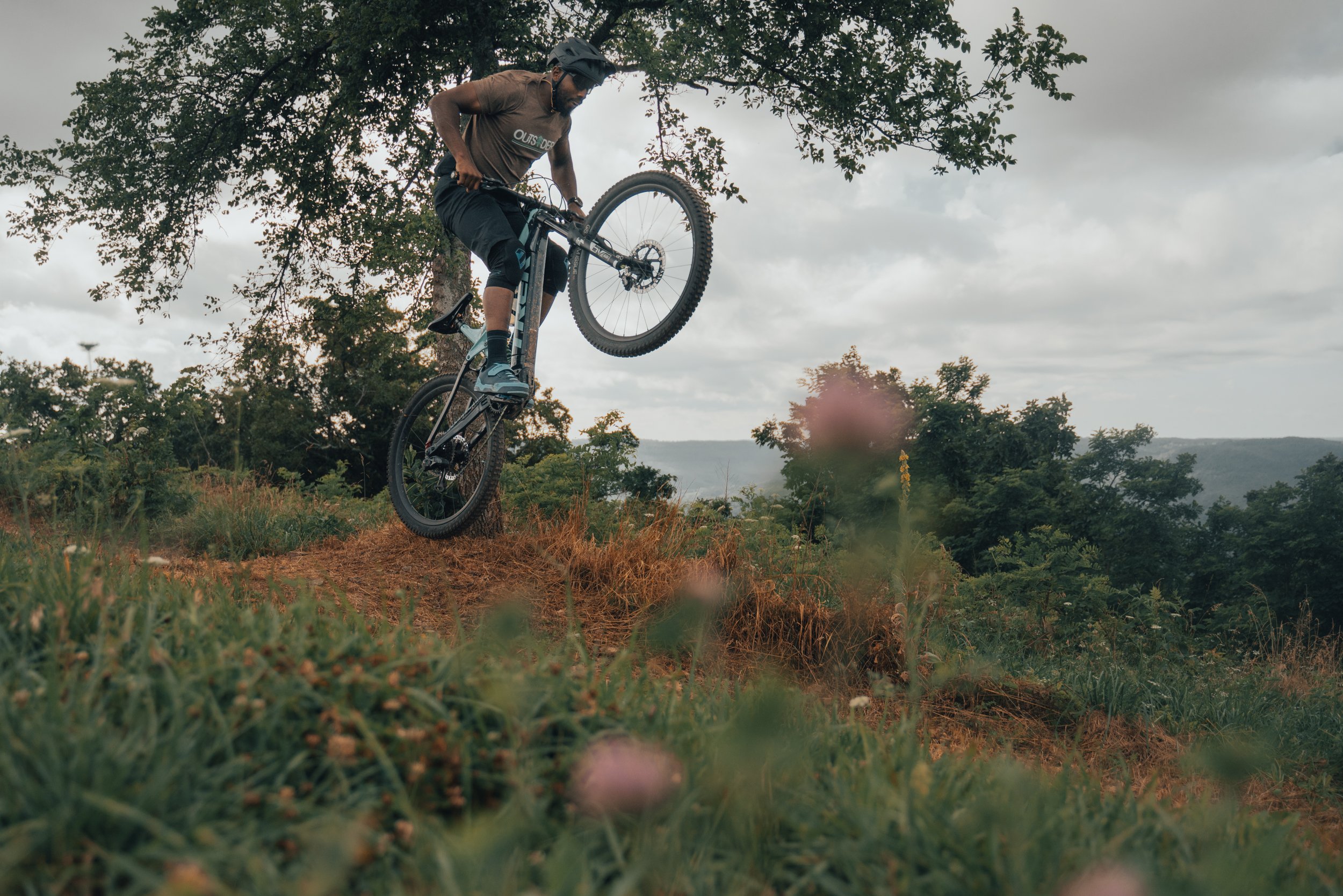

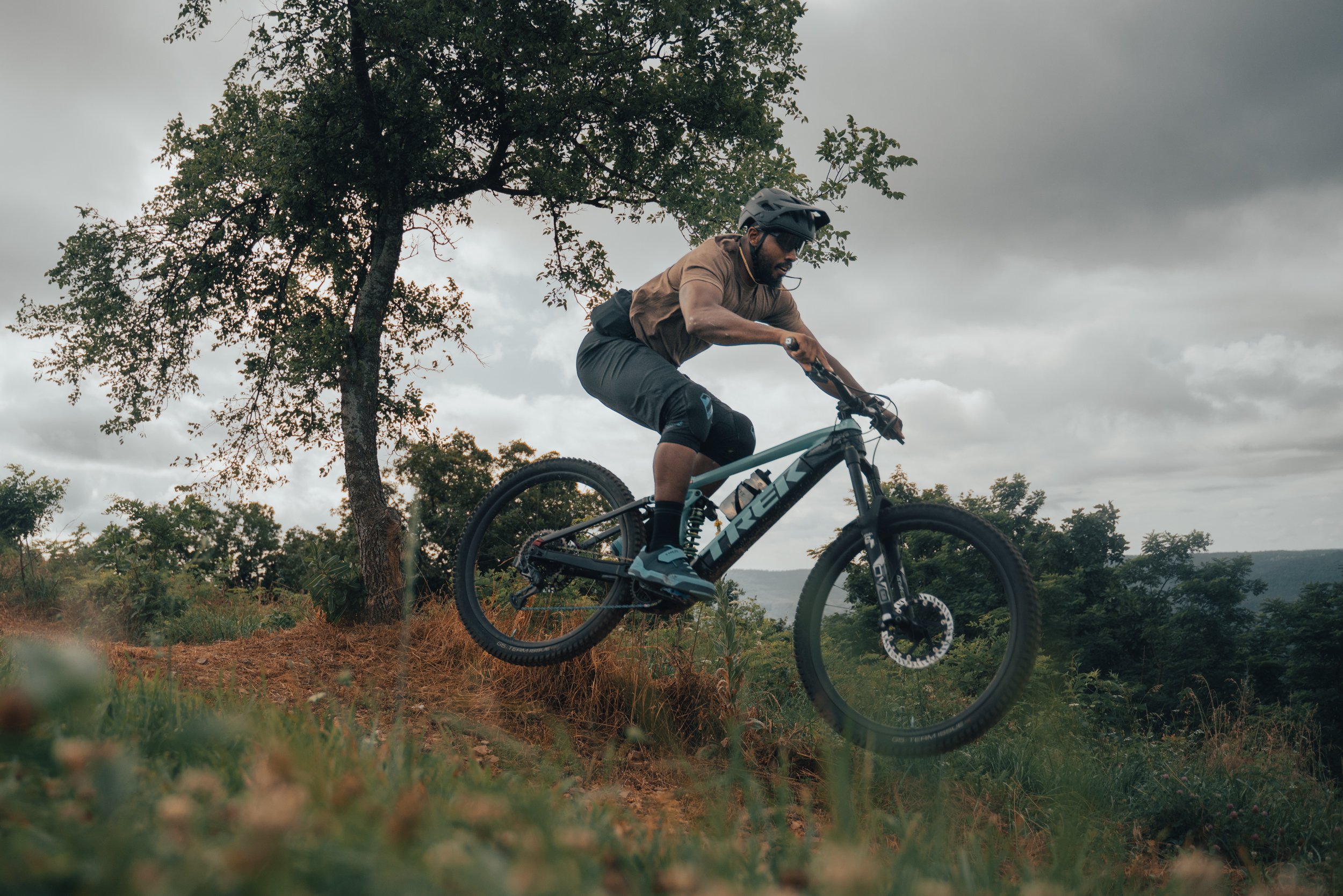
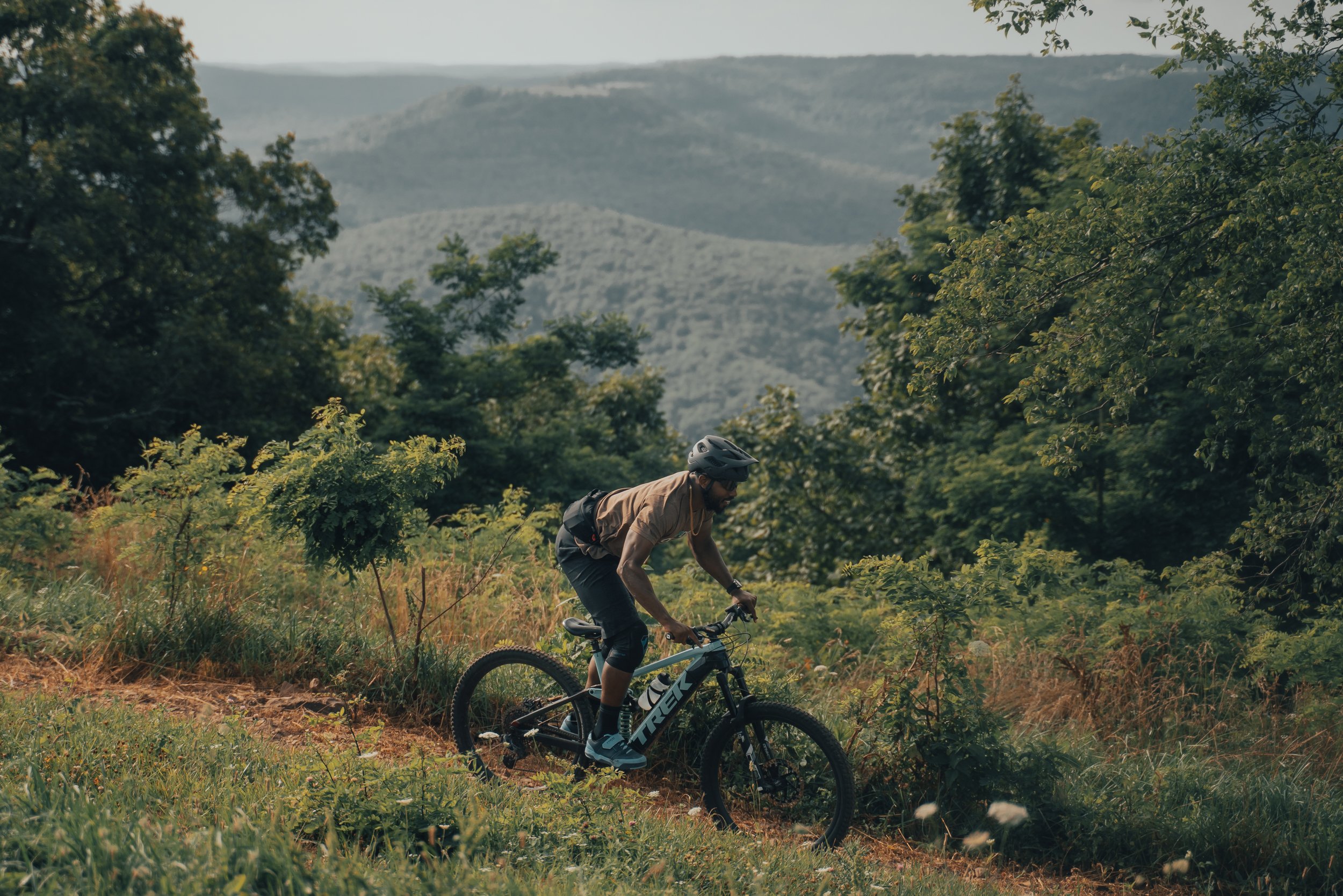
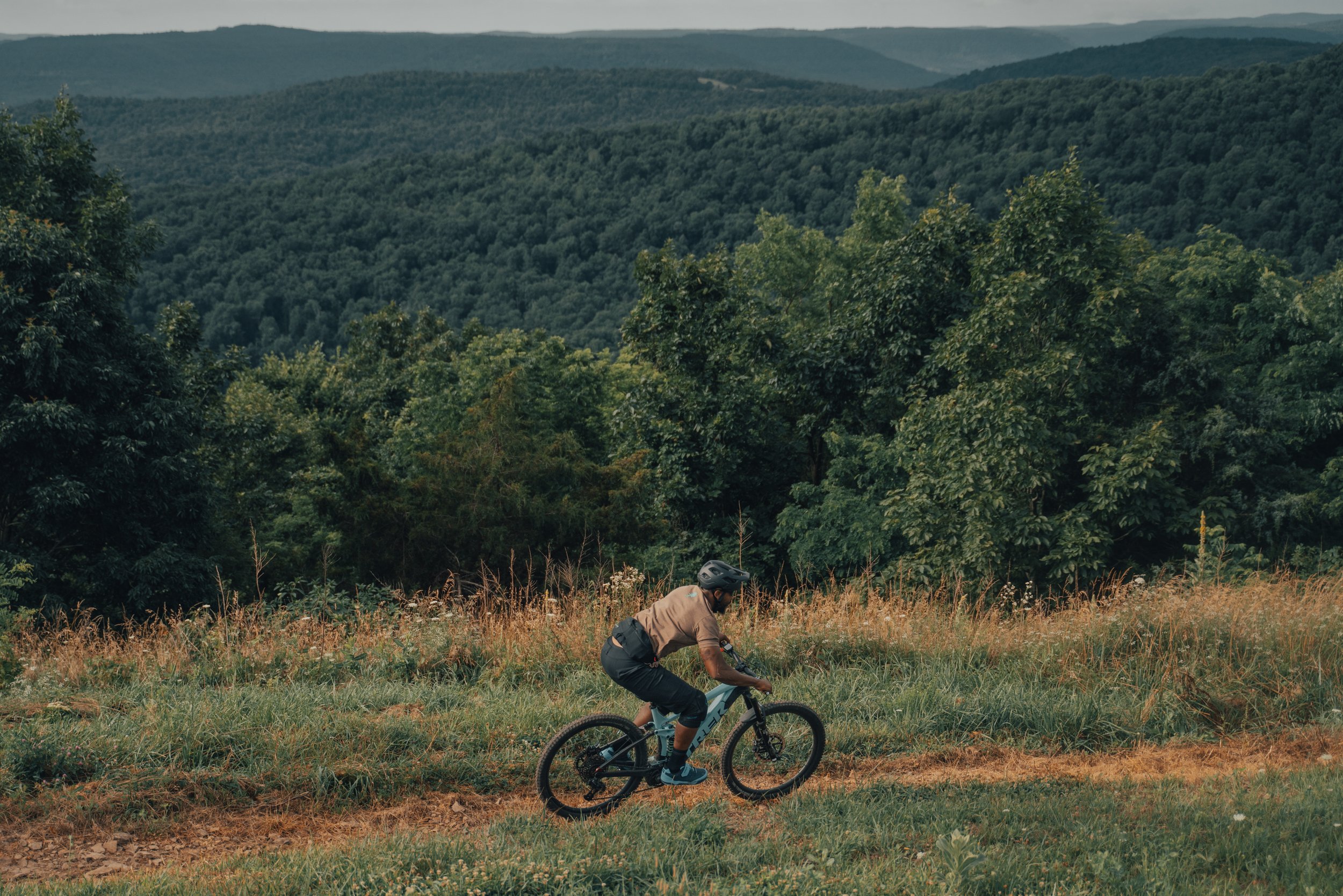

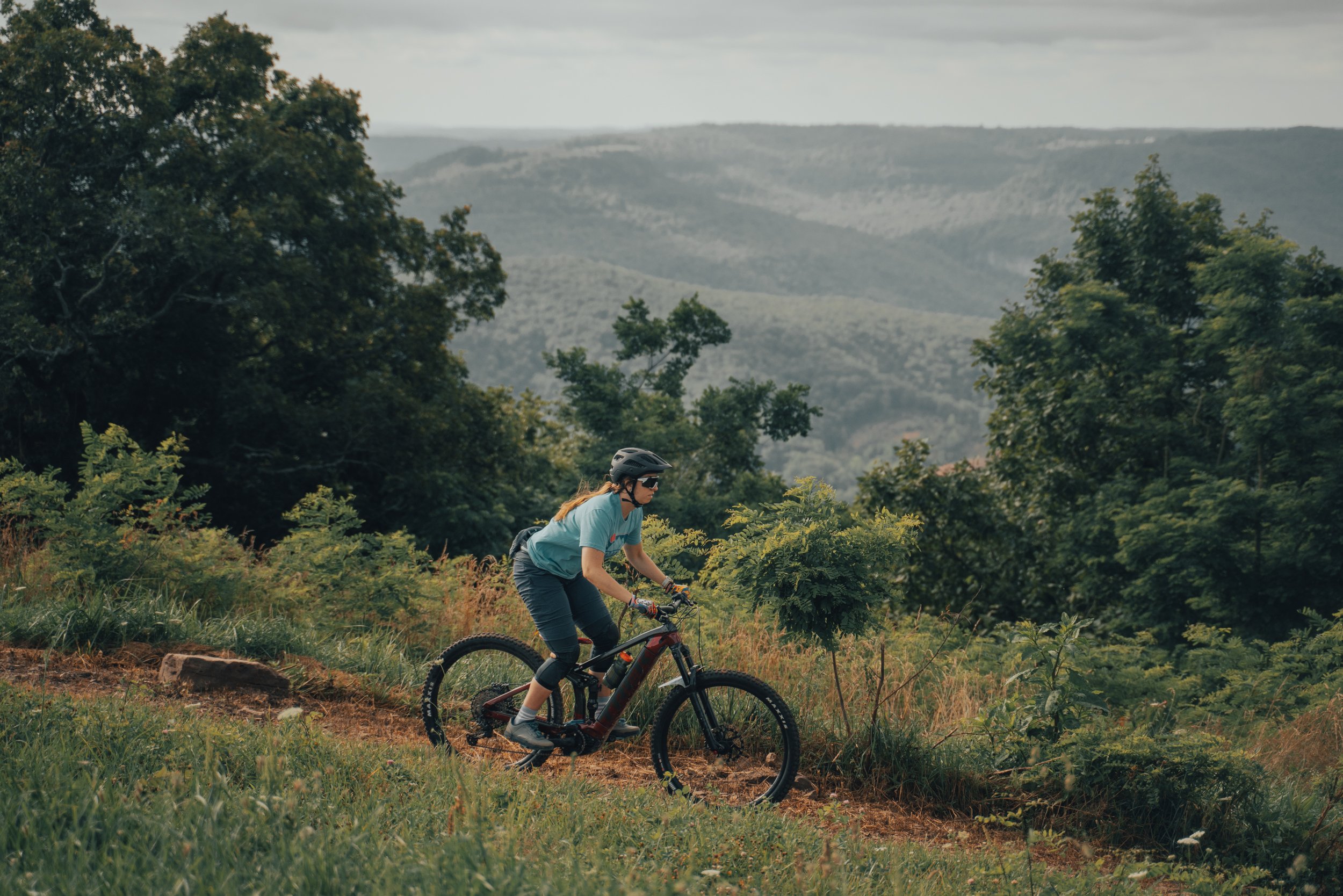
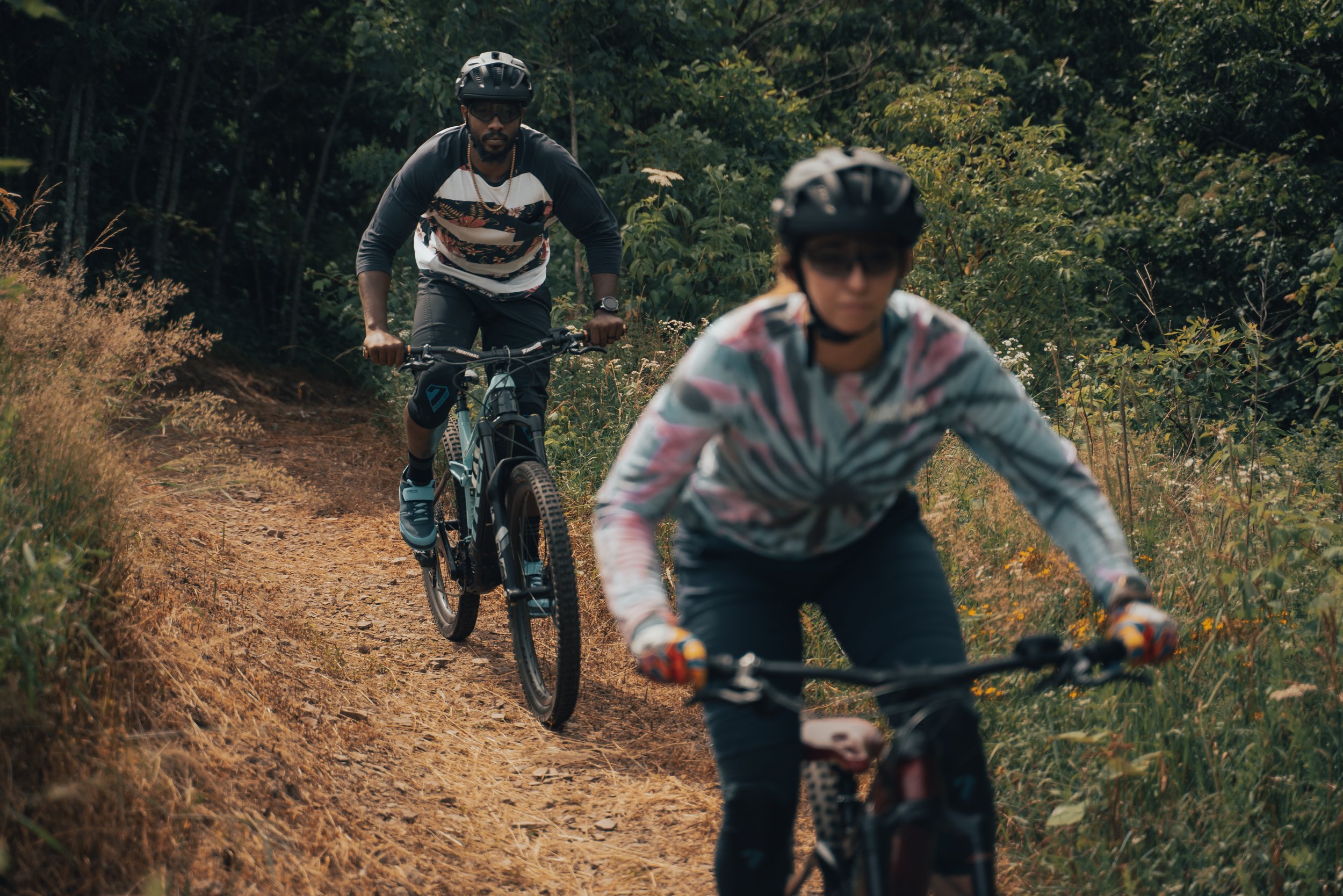
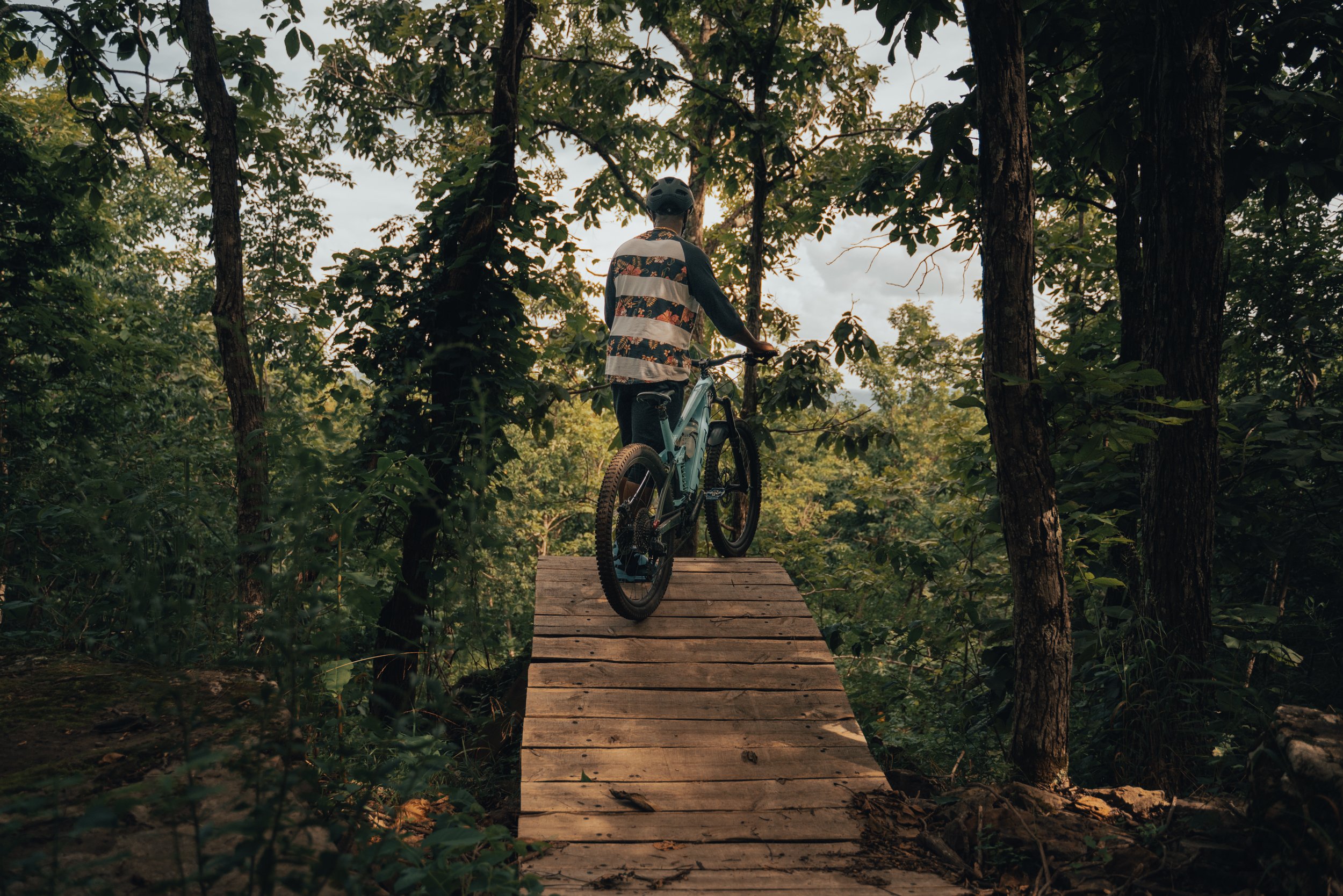
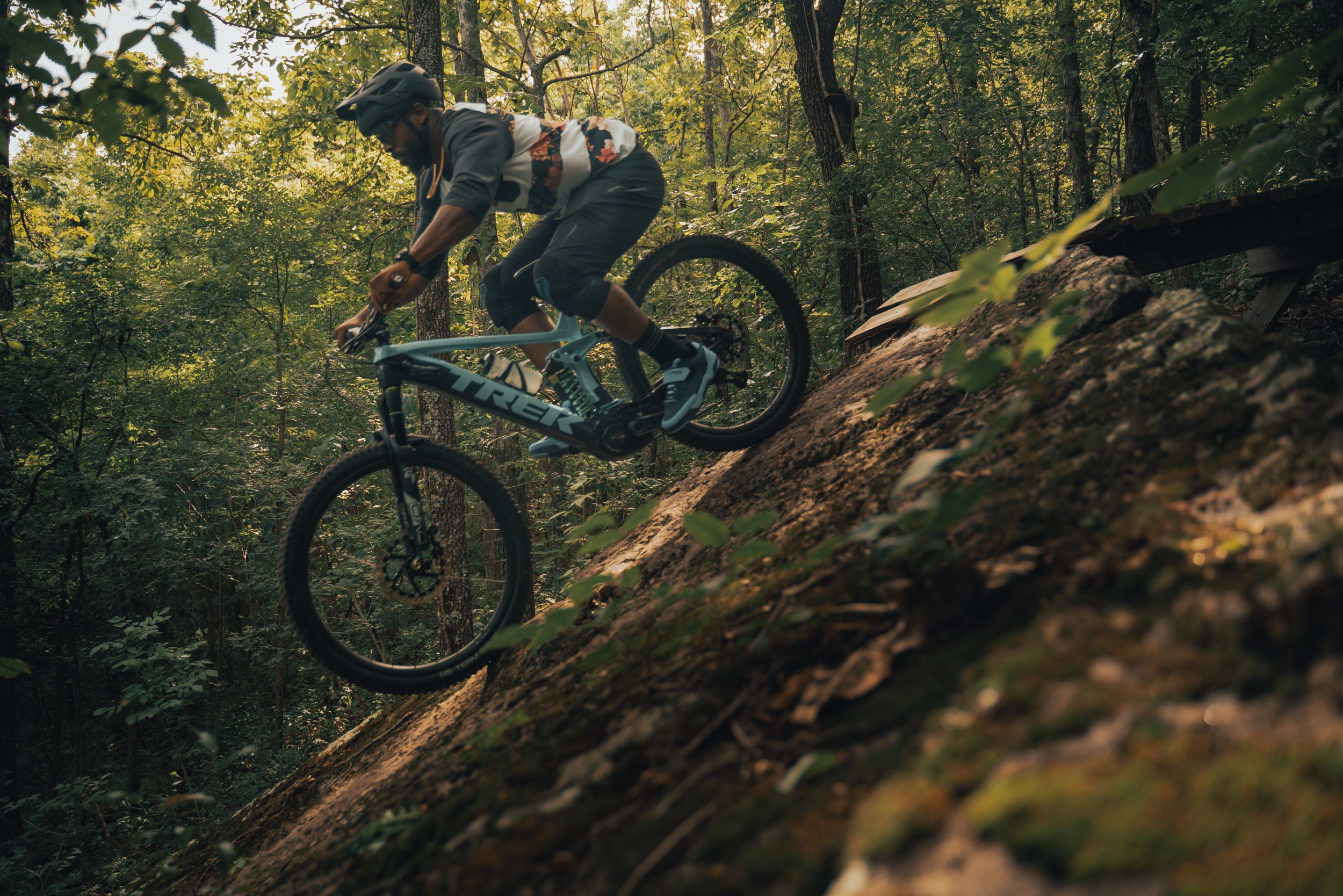
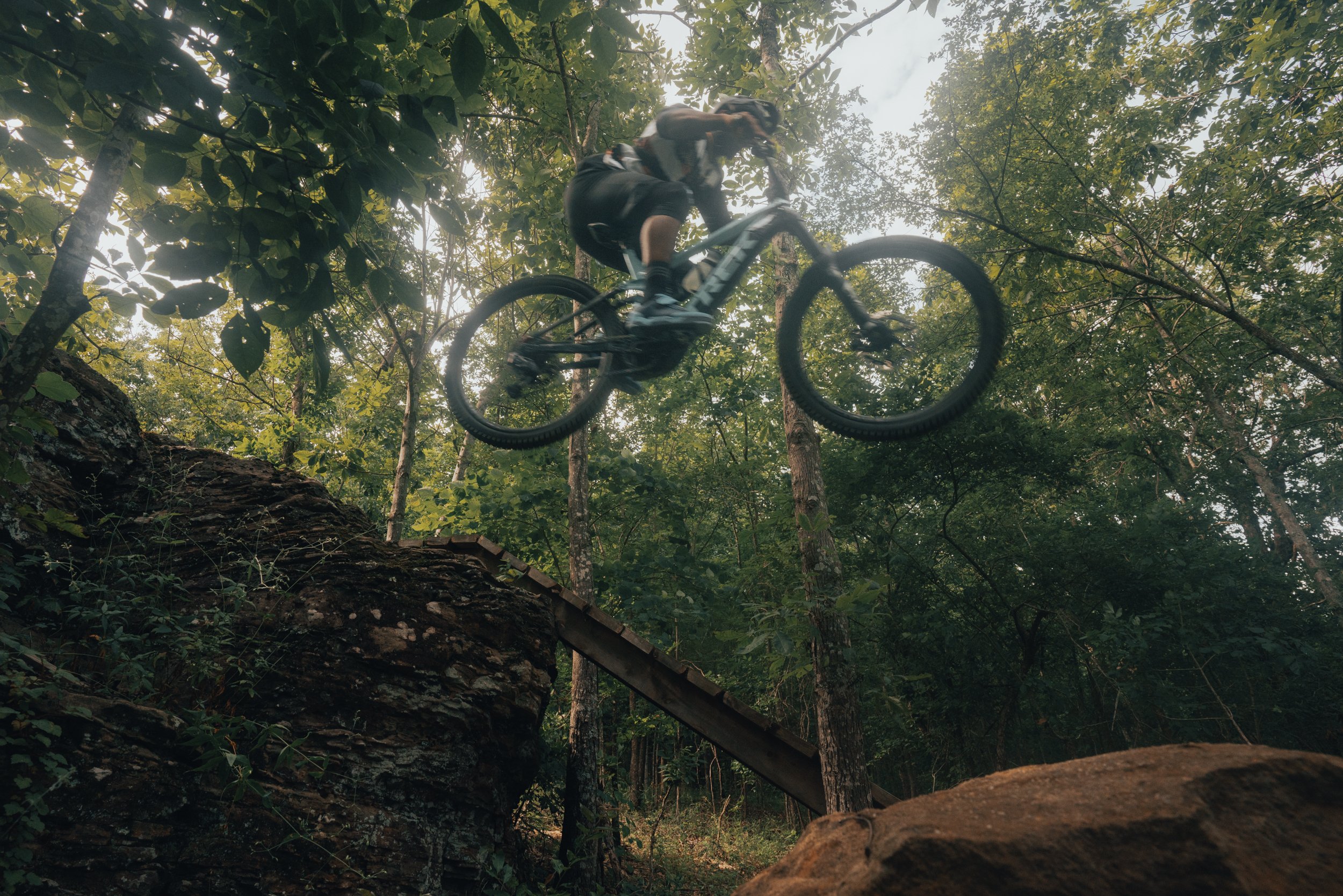
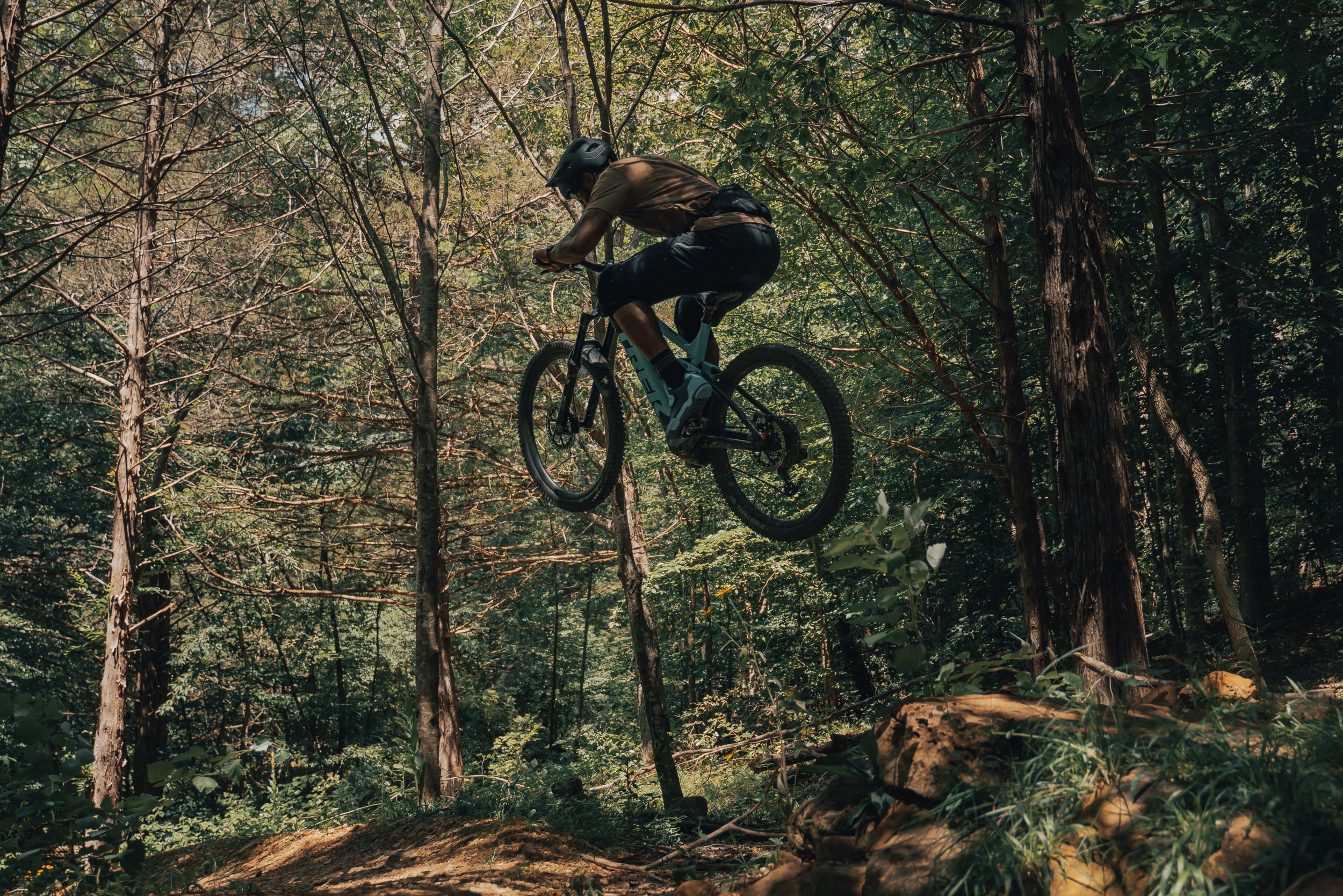
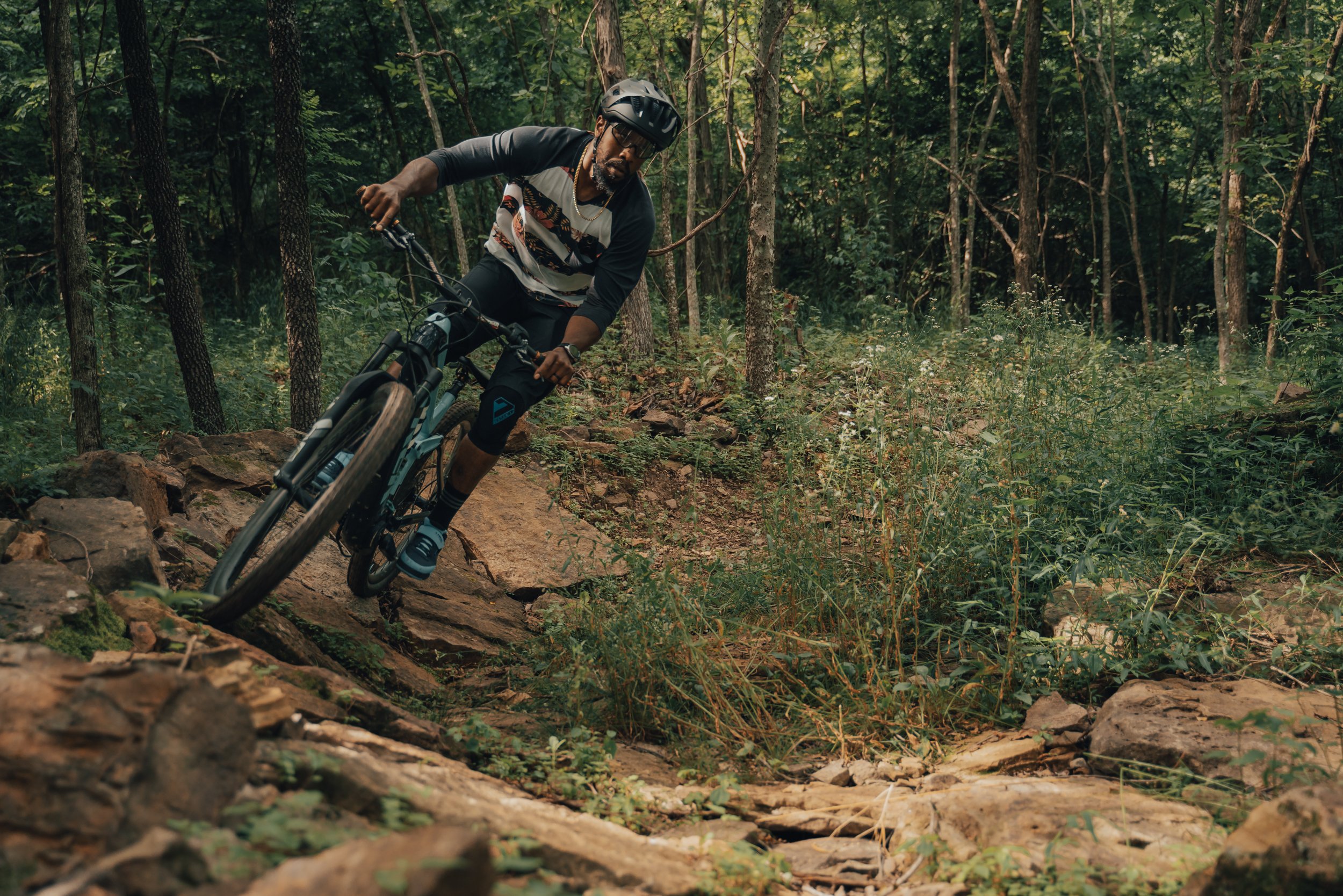
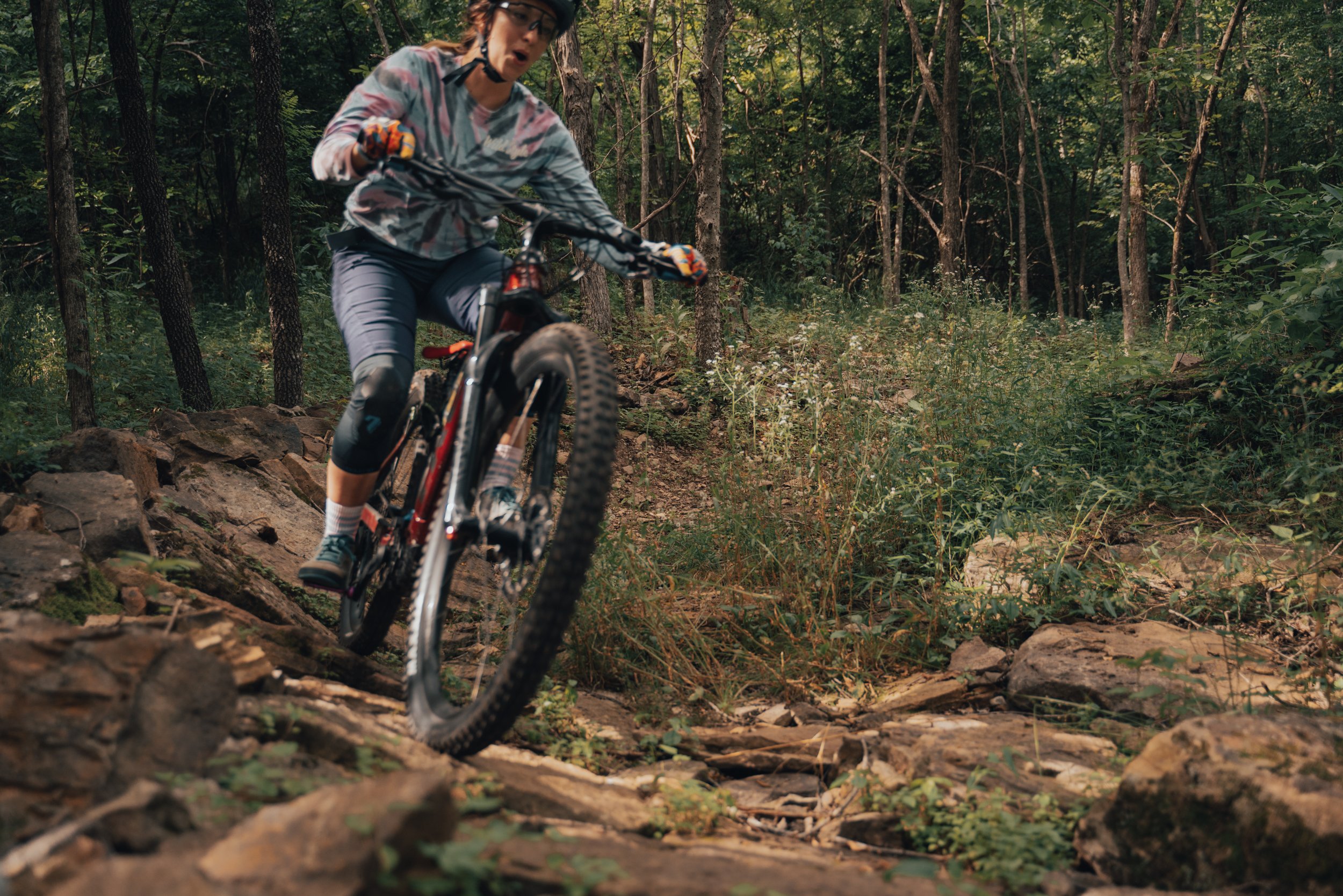
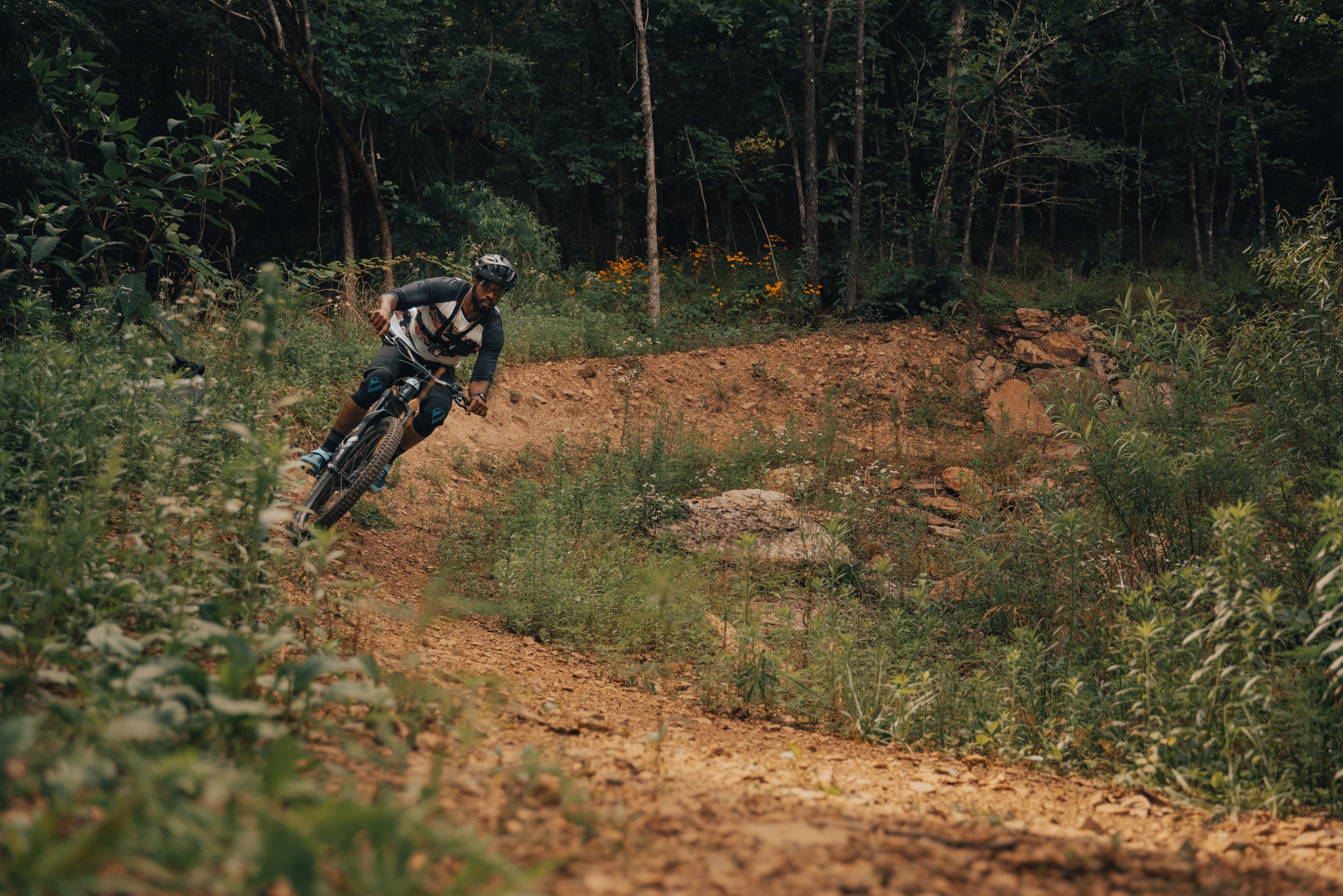
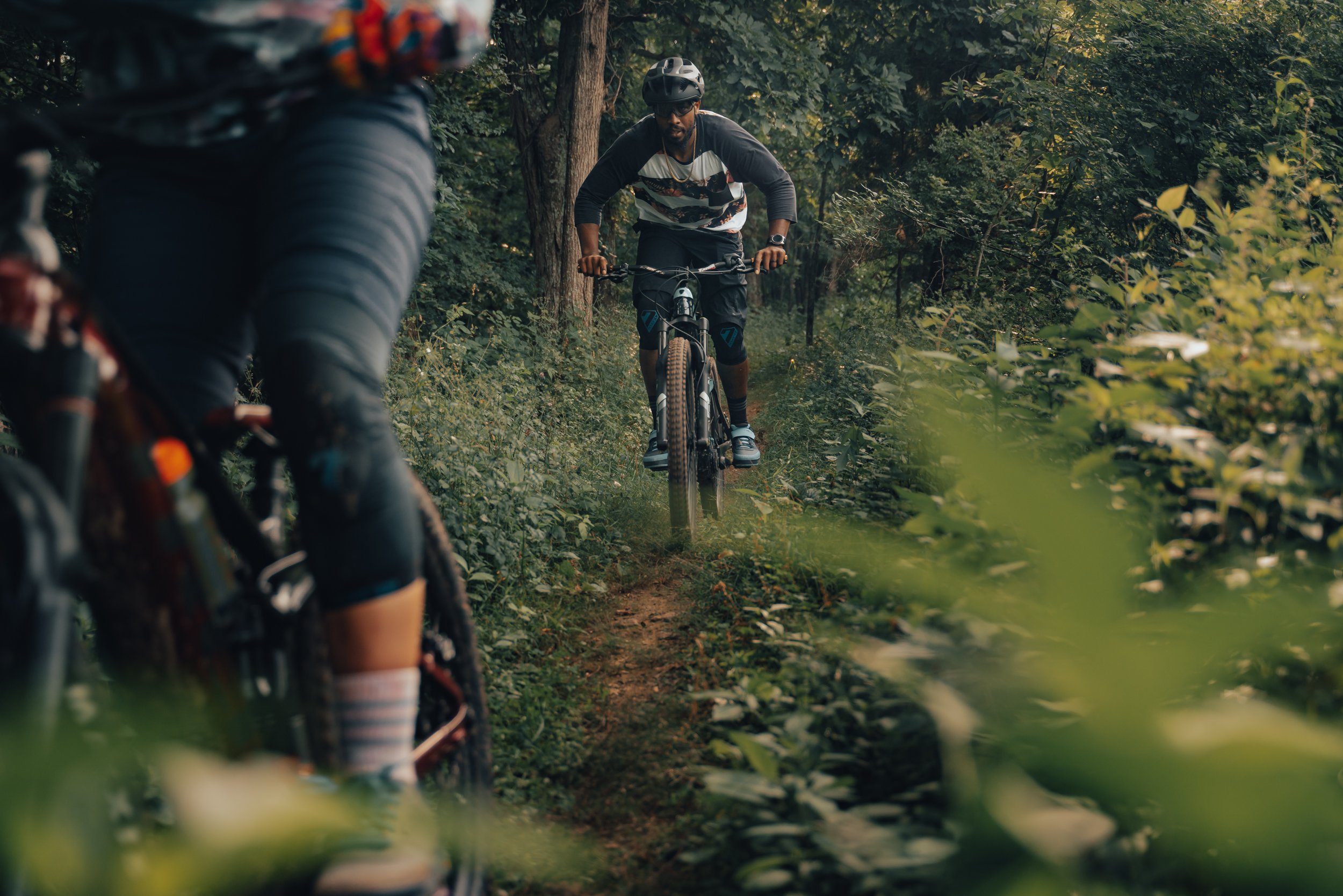
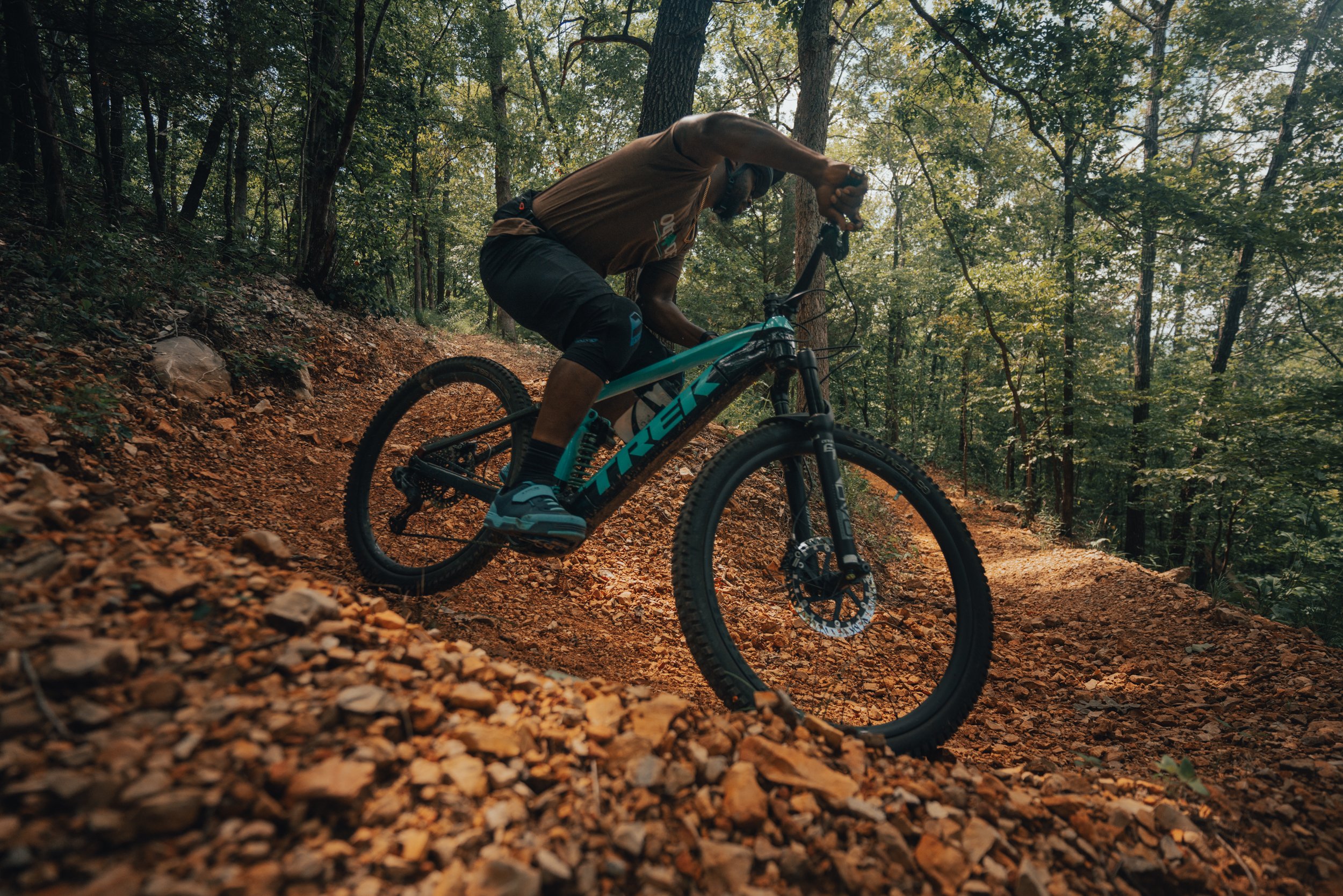
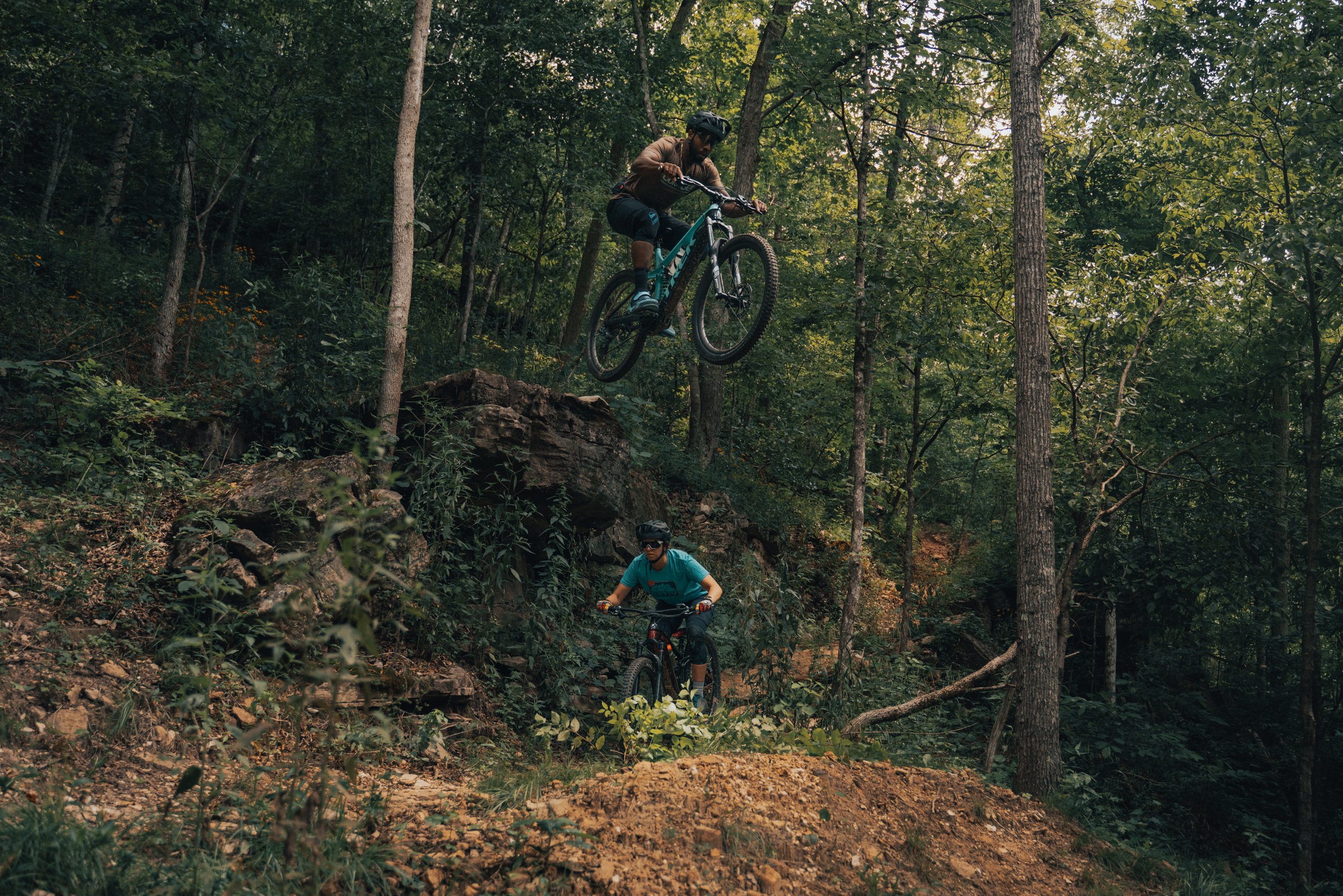

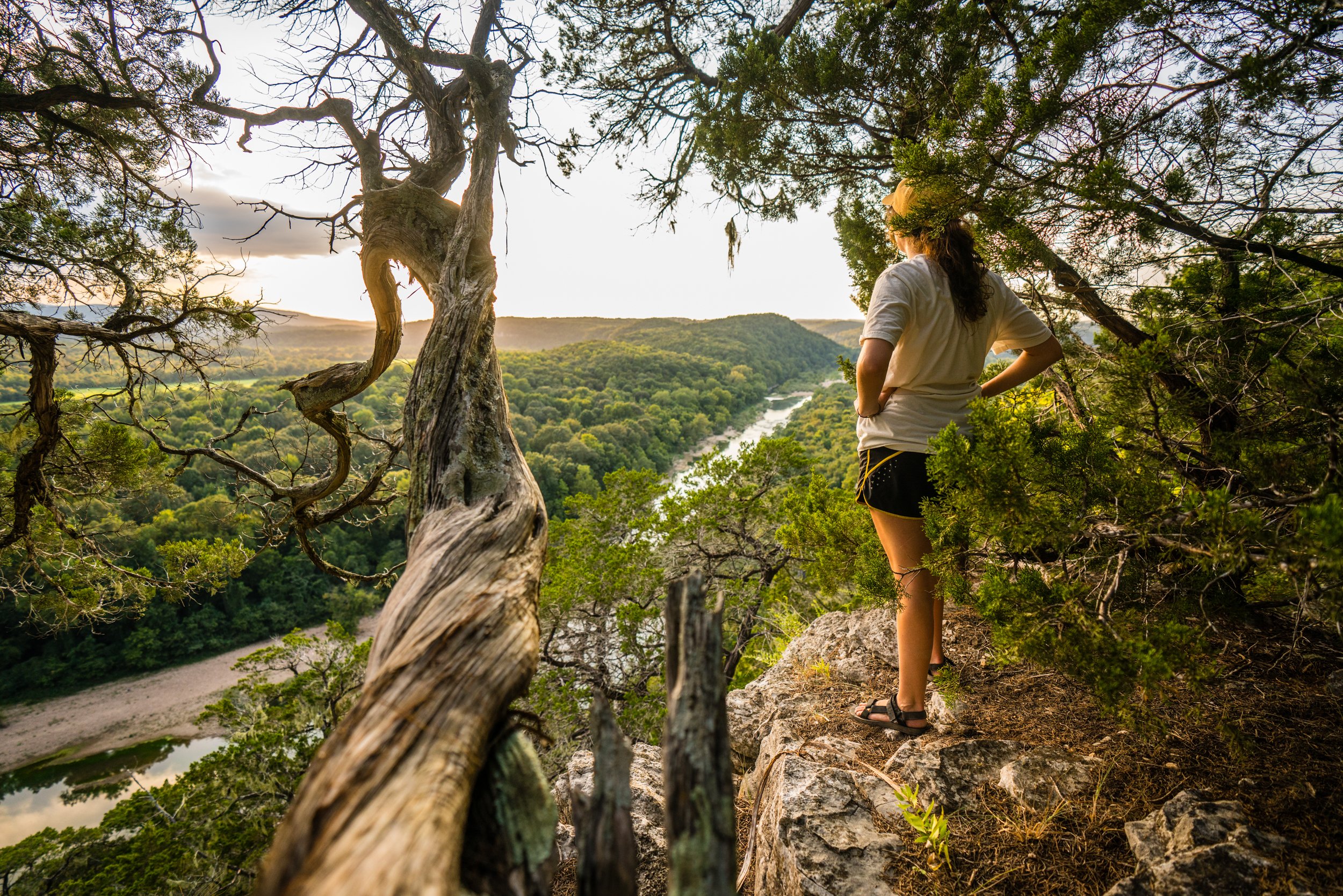
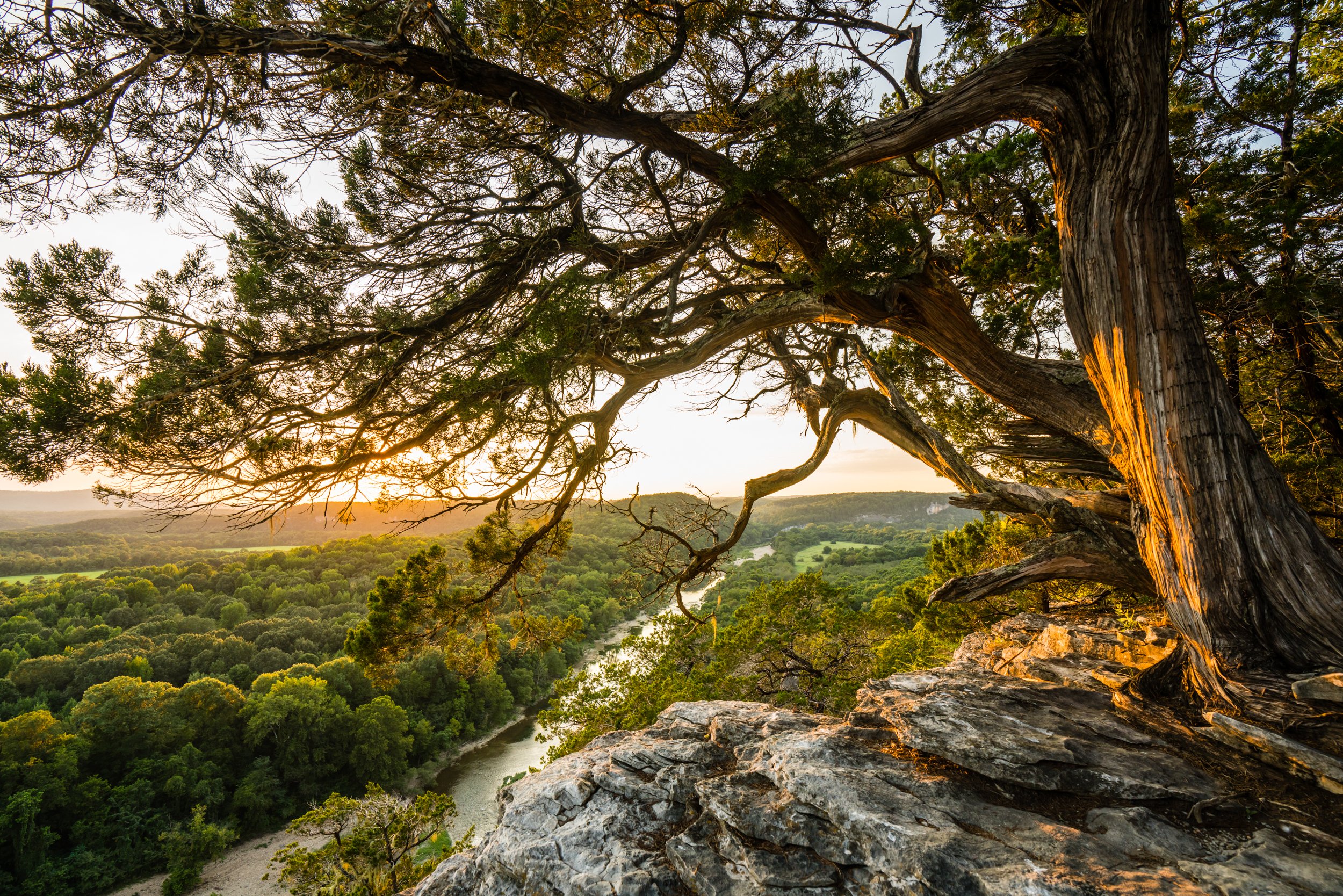







Basking in evenings glow-the Buffalo River flows below the Goat Trail on Big Bluff.
If I had to choose the most scenic viewpoint in Arkansas, then the view from the Goat Trail on Big Bluff over the Buffalo National River would have to be my pick. The vast panoramic views of the Buffalo winding through the mountains and bluffs of the Ponca Wilderness are unique and unparalleled. The bluff itself is "said to be" the tallest sheer vertical cliff face found between the Appalachians and the Rockies, with an estimated height of 560 feet! However, the Goat Trail runs along this cliff face at around 340 feet above the river.
On Tuesday, I decided to make my second hike out to the "big" bluff (this week). Because it's Milky Way season and Sunday nights attempt to catch the galactic center from the Goat Trail was foiled by dense fog socking me in (However, it did provide some beautiful foggy Monday morning views over the river). This particular evening seemed to have favorable conditions, so with my fingers crossed, MC and I headed over to the Centerpoint Trailhead to make our way down!

Whiteout conditions along the Goat Trail, a hiker illuminates a narrow bend from an alcove in Big Bluff, trying to see through the thick fog that has rolled in with the cooler evening temps. Shot during my first milky way attempt of the week.

Winding through the fog, the Buffalo River finally begins to emerge from the white veil of haze. Shot the morning after getting socked in by fog on the Goat Trail.
The three-mile hike down the Centerpoint trail went by pretty quickly. I left my camera in my pack and just went full steam down the old road. The descent down to the Goat Trail would be a pleasant stroll if it weren’t for the fact the road has been rutted out so severely by rain erosion and the hooves of horses. I often think about how great it would be if the county could still maintain this road and people could drive down it to get to the Goat Trail. I usually tell people thinking about hiking the trail that it feels like two miles down and six back out thanks to the one thousand plus feet of elevation change from start to finish. Still, the trail is popular enough as it is, and the big hike back out is one of the only things that seem to control those numbers these days slightly.
We arrived well before sunset at the fork of the Centerpoint Trail and the Goat trail - found on a large saddle in the mountain with open woods that are perfect for hammocks and an existing fire ring. This large saddle is where I usually try to camp, but several occupants were already there, so we used our extra time to scout out another option for camp. If you take the little well-worn spur trail to the right of the fire pit, it will lead you to Big Bluff, and if you stay straight on the main path, it eventually takes you all the way down to the river.

My usual campsite at the fork of the Centerpoint Trail and the Goat Trail on a large saddle in the mountain with open woods that are perfect for hammocks and an existing fire ring.
We decided to go to the far end of the Goat Trail and follow the path which leads down to the river to look for campsites off of the bluff (Camping on Big Bluff is prohibited by the National Park Service). We also took a side hike to bushwhack up to the top of Big Bluff and found a few impressive views, but the woods and underbrush were so thick that we decided to make our way back down before making it to the highest point.
During our excursion, we found a nice campsite away from the bluff, down on a flat open expanse on the mountain's ridge, with some decent trees for hammocks and an existing fire ring. We decided to call this home for the evening and set up our hammocks since it would be well after dark before we made it back.

Making camp on a flat open expanse of forest along the ridge of the mountain past the Goat Trail.
We made our way back toward the overlooks along the goat trail and through one of my favorite areas along the path, which wanders through a thicket of ancient junipers. Some of these trees have been dated back to over 800 years old by the National Park Service! After some time spent with these twisted and weathered beauties, we found our front row seats for sunset on the narrow sandstone ledges of the Goat Trail.
Sunset was more impressive than I had expected it would be - based on the time that the radar showed the clouds were going to move out. We ended up getting to witness a very vibrant and impressive sunset with a 180-degree view of the Buffalo River meandering through the Ozarks.

Ancient Juniper overlooking the Ponca Wilderness from the edge of Big Bluff.

Front-row seat for a sunset on the narrow sandstone ledges of the Goat Trail.
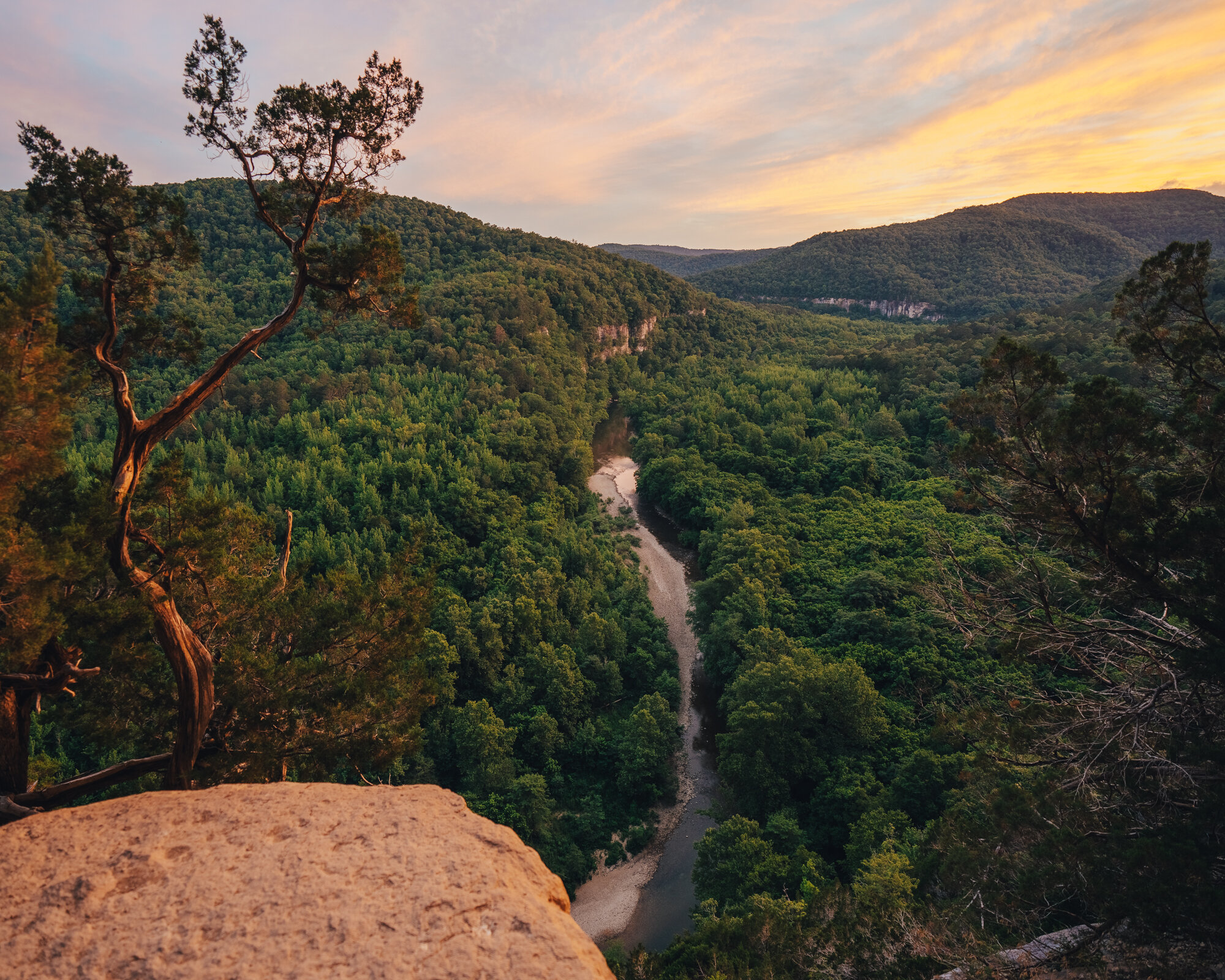
The Buffalo meandering through the Ozarks viewed from the Goat Trail at sunset.
Toward the end of sunset, we witnessed an incredible show as the moon set along with it. At the same time, lightning bugs began to dart all around the edge of the bluff. We enjoyed the show and ate some snacks we had brought to the bluff side. After the moon set, we still had a little time before the clouds would move completely out and the milky way would be fully visible. Thankfully there didn’t seem to be much moisture in the air, and no fog had begun to form, so it looked like tonight was the night for clear viewing of the milky way from the Goat Trail!
Around midnight, the milky way was in the proper position, and clouds had moved out enough for a great view of the galactic center! It was a beautiful sight, and I spent several hours snapping photos before calling it a night.

Moonset and fireflies viewed from the Goat Trail.

Self Portrait below the Milky Way
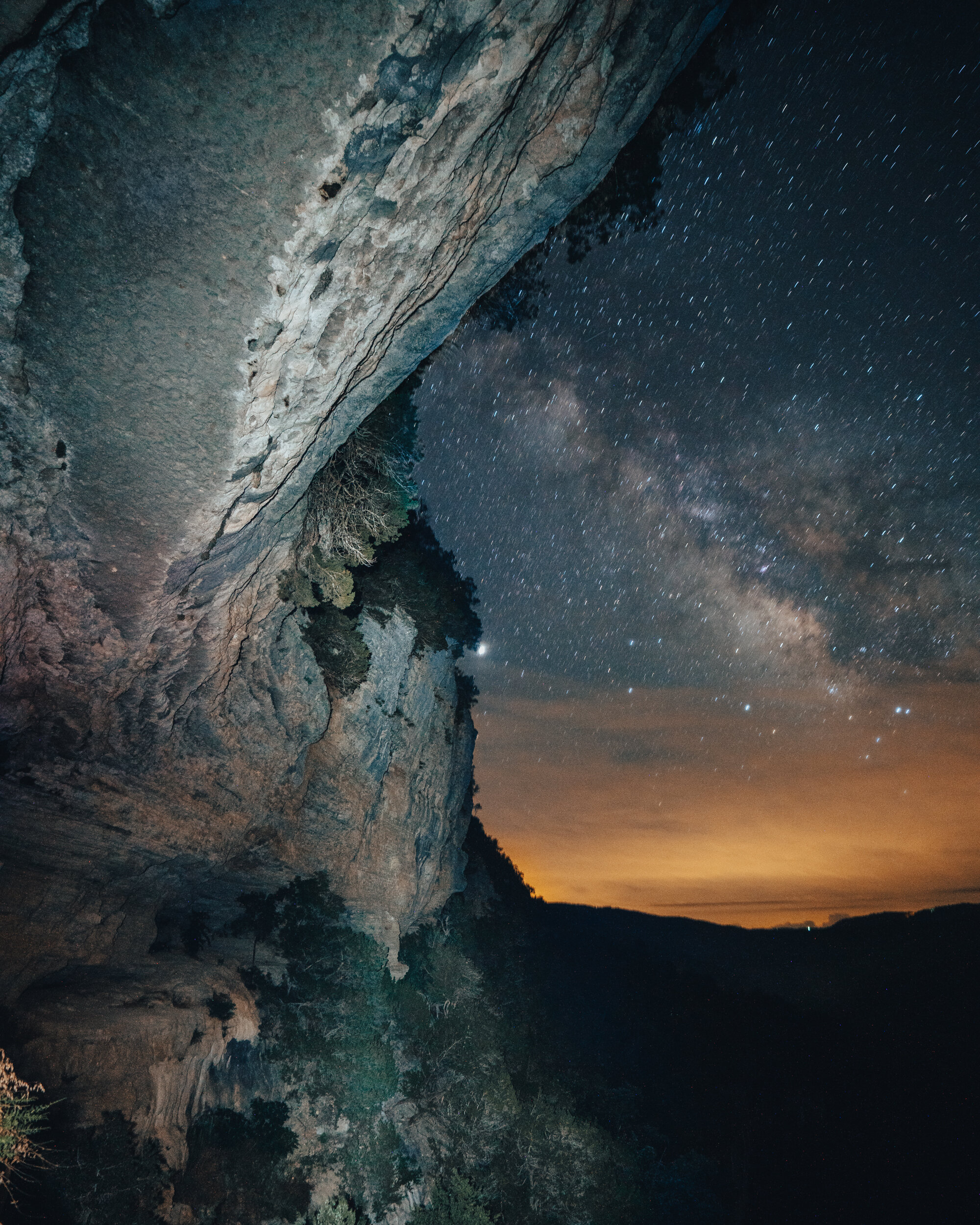
The Milky Way viewed from the Goat Trail on Big Bluff.

Centerpoint Trail to the Goat Trail
Difficulty: Strenuous Length: 6 Miles Roundtrip Elevation: 1076 ft

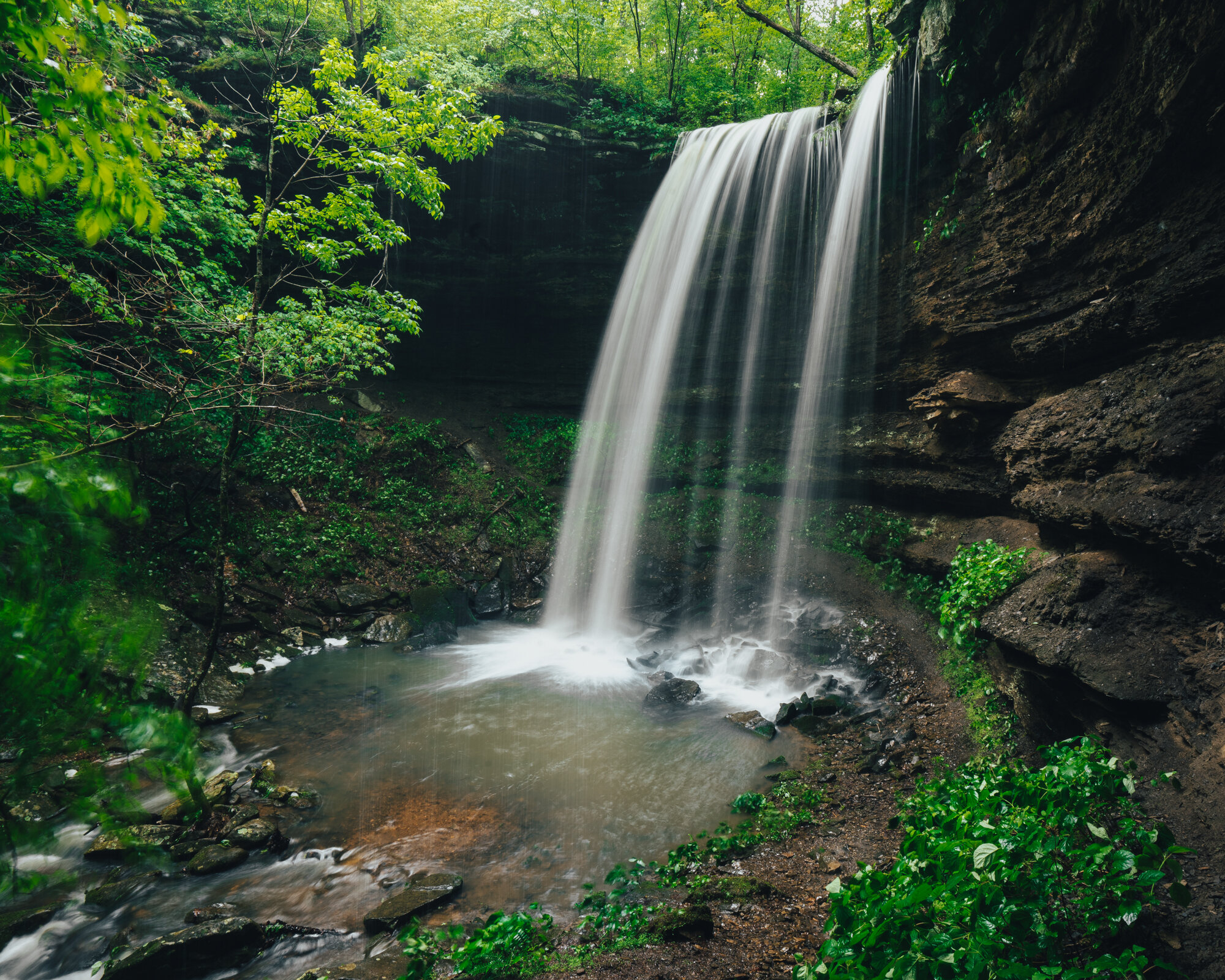
Hammerschmidt Falls Prints available
I've been to Hammerschmidt Falls (named after John Paul Hammerschmidt, an Arkansas Congressman who played a HUGE role in getting the Buffalo River designated as America's first National River!) countless times over the years. It's an easy hike (roughly one-mile roundtrip) and often seems like a good option for a lazy day hike. The thing is that the falls (located on the upper-most section of the Indian Creek Drainage at high elevation) take a considerable amount of rainfall to get Hammerschmidt flowing to its full potential. I'm talking multiple inches of rainfall over a twenty-four-hour timespan kind of considerable rainfall, the type of rain that puts the Buffalo National River into flood stage.
On Saturday, after days of light rainfall, I went out to the falls with a couple of friends to see how it was flowing. It looked the same as usual, one shoot of water pouring off the left side of a jagged point in the middle of the falls (still beautiful but not what I was hoping for). That evening and into Sunday morning, about two inches of rain fell around the Ponca area sending the Buffalo River into flood stage, and I hoped this was my chance to see the 43' Hammerschmidt Falls in all its glory.
Below is a comparison of the flow at Hammerschmidt before and after a couple of inches of rain:
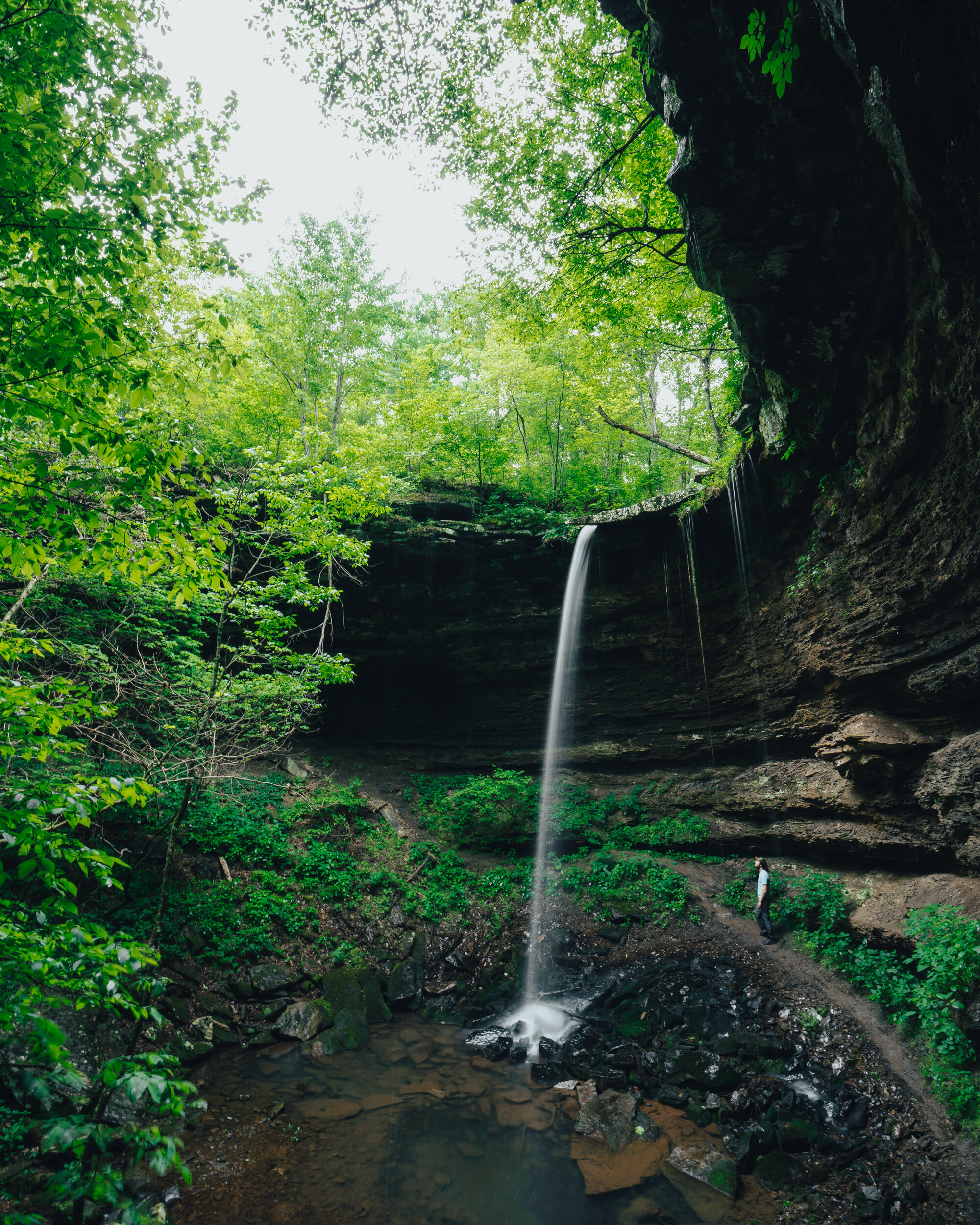
Hammerschmidt Falls after days of light rain w/ Justin for scale.

Hammerschmidt Falls after an evening of flooding rains w/ Tyler for scale.
Sunday morning, we parked at the top of the road to Horseshoe Canyon Ranch, next to the $5.00 firewood stacks, crossed HWY 74, and started down the muddy road across from where we parked.

$5.00 firewood at the entrance to Horseshoe Canyon
I'm sure some people have vehicles capable of driving this road, but it's a muddy, rutted mess, and I would suggest not attempting to take a car down it. The hike is short enough as it is. We scrambled around the muddy puddles filled with the overflow from the private pond that sat next to the old road, made our way down along the red clay gravel, exited the forest into an opening, clear-cut for the power lines overhead, and then back into the woods.
The creek that feeds Hammerschmidt was running over the old road. It was higher than I had ever seen it flowing over the road, which made me extremely excited for what we would see just 100 yards downstream (the road continues into the forest, but to reach the falls, you'll turn left instead of crossing the stream and follow the drainage downstream).

High flow along the stream that feeds Hammerscmidt Falls

The well worn trail down to Hammerschmidt Falls flowing with overflow from nearby stream.
The little well-worn trail that hikers have beaten next to the creek was a stream in its own right, and I splashed quickly through it, only pausing to keep my balance along the slick rocks scattered around the top of the falls. Hammerschmidt was roaring, and as I made my way to the left of the falls (to get to a steep but accessible way to get to the bottom of the falls), I could see the full white veil of Hammerschmidt falling through the thick shroud of dark green late spring leaves….it was flowing just as I had hoped it would be!

The white veil of Hammerschmidt falling through a shroud of dark green late spring leaves

The cascades above Hammerscmidt Falls are beautiful in their own right.

Difficulty: Easy Length: 1-Mile-ish Roundtrip Elevation: 150 Feet

Explore the scenic Lost Valley Trail to Eden Falls in Buffalo National River, Arkansas. Discover hiking tips, trail highlights, and stunning photography.
The Ozarks are karst and riddled with caves and sinkholes, but nearly all entrances to these underground ecosystems are closed these days to protect the bat populations from white-nose syndrome. Thankfully there are still a handful of commercial caves in operation that allow visitors to see the hidden wonders of the Ozark Mountains. Mystic Caverns is one of these commercial caves. It is a family-owned operation that gives visitors the opportunity to view two different caverns (Mystic Cavern and Crystal Dome). These caves feature classic formations like stalagmites, stalactites, flowstone, and columns and rare calcite formations such as helictites, shields, and spherical stalactites.
My family came to visit me during the heat of summer, so I took them to Mystic Caverns for a great (cool) family activity. Here are some images from Mystic Cavern and Crystal Dome:
The Old River Trail, stretching for a little over 13 miles, winds its way through the picturesque bottomlands of the Buffalo River, connecting the towns of Ponca and Erbie. Long before the establishment of America’s First National River and the rise of tourism in in the area, settlers of buffalo river country used these very same paths to transport their horses and wagons along the river. Walking along this trail, you can find remnants of these families' homesteads, all but completely reclaimed by the surrounding forest. It is truly awe-inspiring to witness these snippets of a bygone era and to imagine the hardships that were endured in this unforgiving part of the Ozarks. Horseback riders almost exclusively use the trail, but some hikers use it to connect an extensive network of other footpaths in the area (like the BRT, which intertwines throughout the length of the ORT). The ORT offers incredible views of Buffalo River Country. The up-close and personal scenes that you can usually only see while floating the river (in comparison, the ORT provides many more scenic opportunities than the BRT (which mostly keeps you tucked back in the forest, away from scenic vistas).
Fall and Winter tend to be the most popular times to tackle the Old River Trail. However, no matter the season, thoroughly planning your trip is a must if you want to have a successful and enjoyable experience. Starting your journey with torrential rain in the forecast could easily dampen your spirits and make the trail impassable. During the summer, the ORT becomes very overgrown, so be prepared to navigate through dense foliage and brush. Additionally, ticks, chiggers, and even mosquitos can be a nuisance and potentially pose health risks, so pack bug spray and wear appropriate clothing to protect yourself. One important factor to consider when planning your trip is the river crossings. There are twenty river crossings along the ORT, and they can become treacherous during the rainy Spring months or any season with heavy rainfall. Being aware of the weather conditions and checking river levels before starting your hike is crucial to ensure your safety and avoid any potential hazards. It's worth noting that the Old River Trail is a shared-use trail, meaning it is open to both equestrian and hiking activities. If you choose to explore the trail on foot, be mindful of horse droppings along the way!
During this year's peak autumn color display here in Ponca, I had the amazing opportunity to experience the Old River Trail as it was truly intended - by horseback! While I've hiked segments of the ORT numerous times before, either to reach breathtaking scenic spots or to connect with other stunning hiking trails in the area, I had never explored it from this unique perspective. What a treat it was to not only give my legs a much-needed break but to also witness the wonders of the Ponca wilderness from an entirely different vantage point, especially during this particularly beautiful fall color year.
Explore the scenic Lost Valley Trail to Eden Falls in Buffalo National River, Arkansas. Discover hiking tips, trail highlights, and stunning photography.